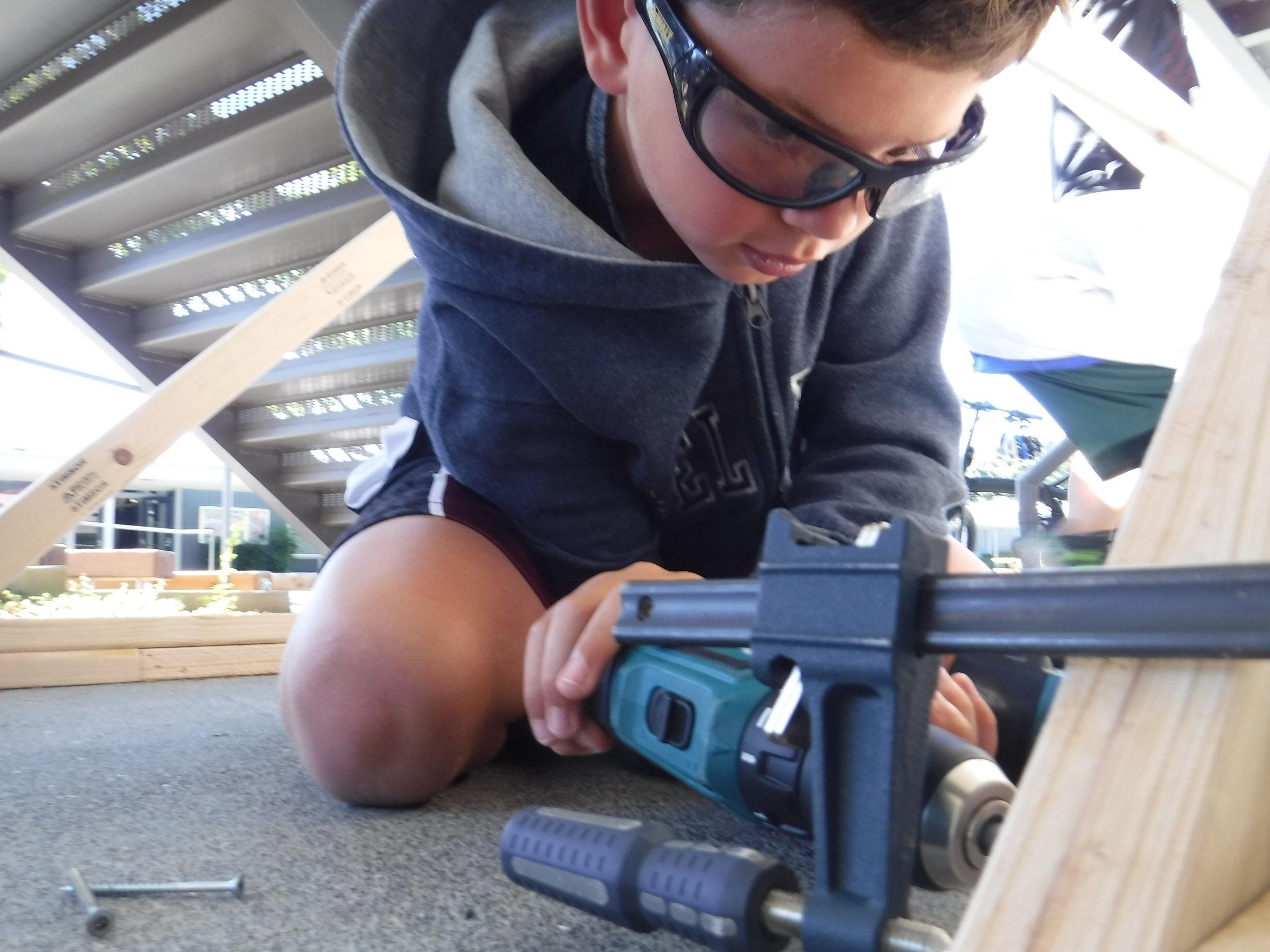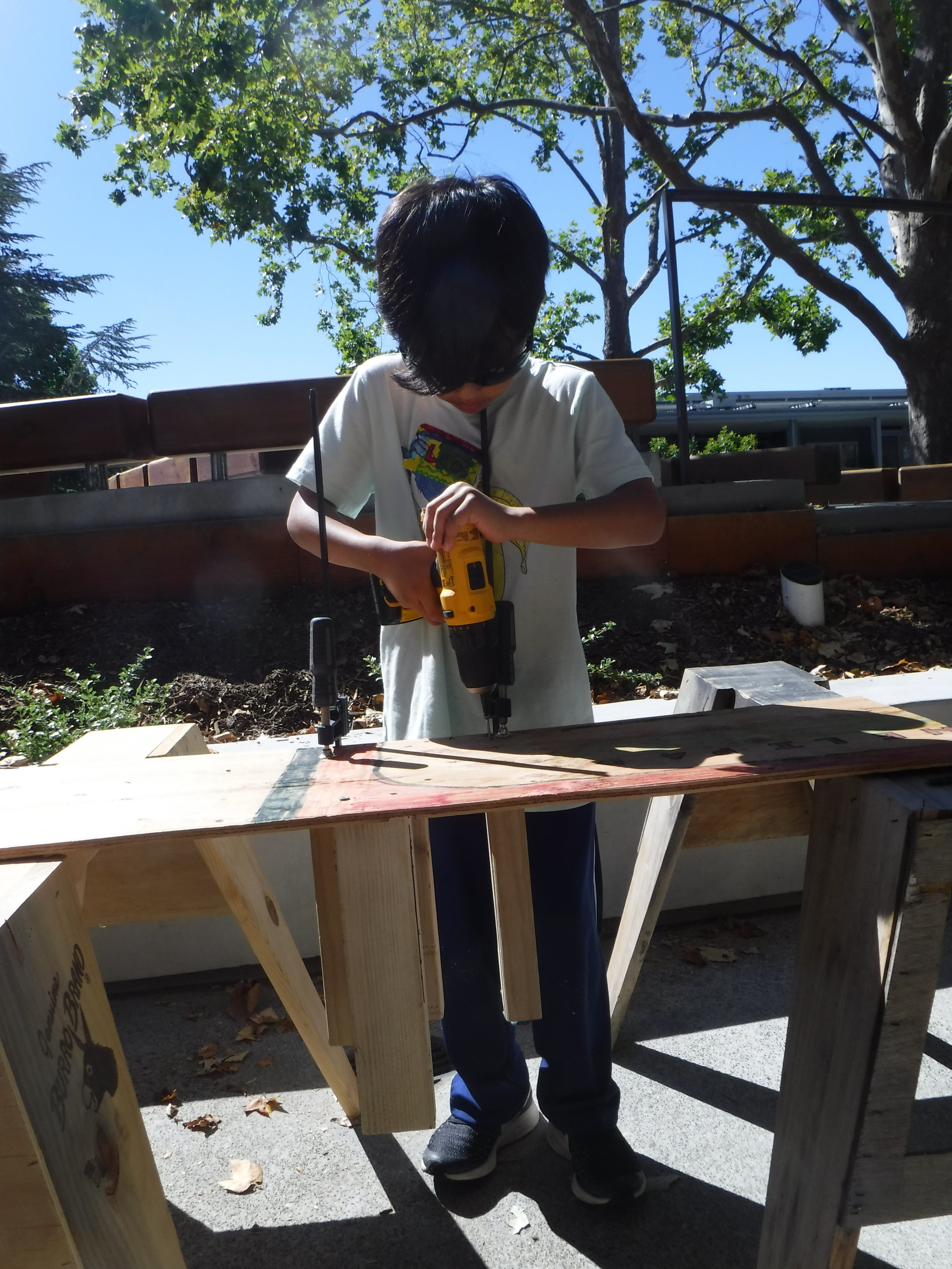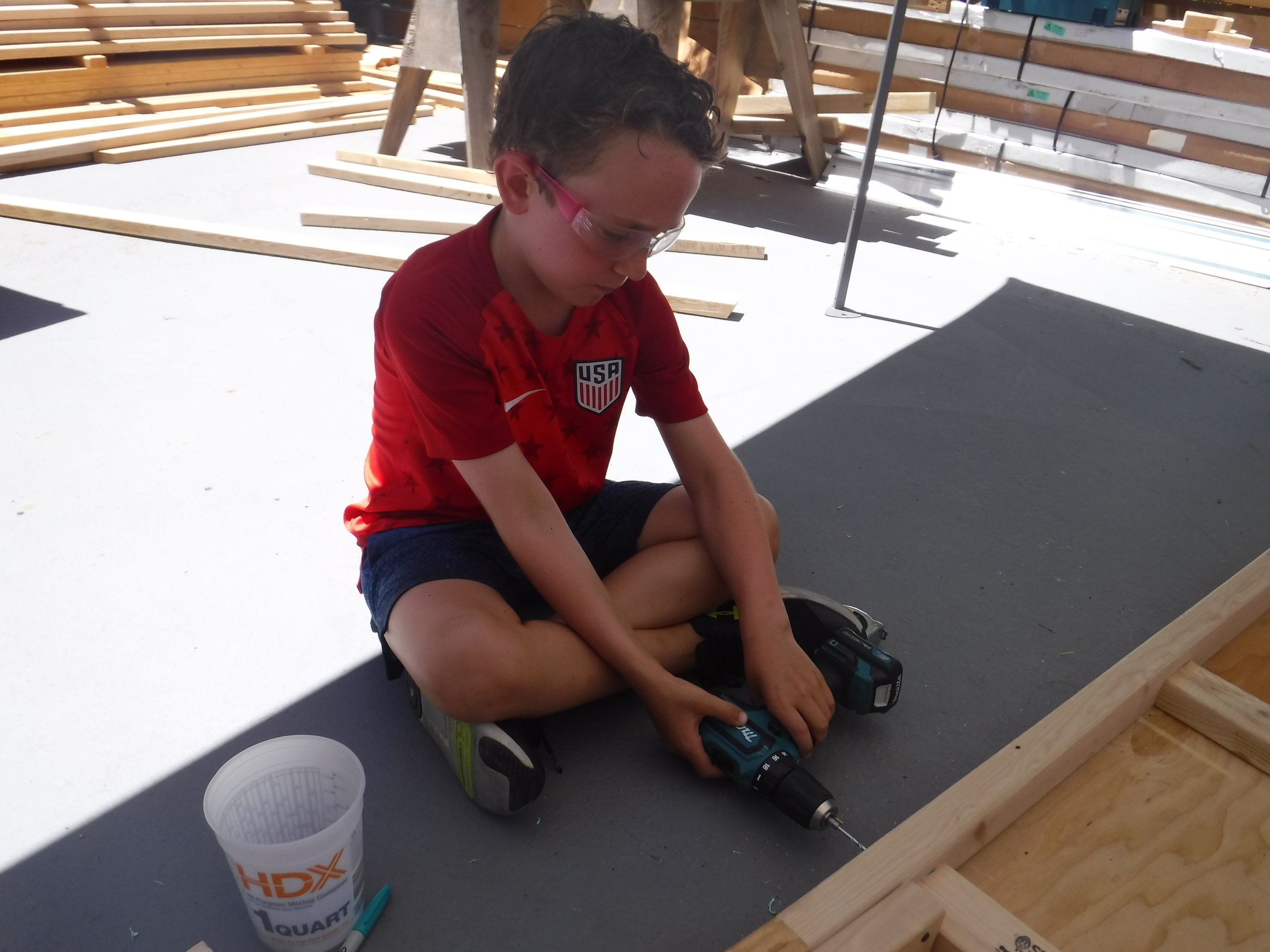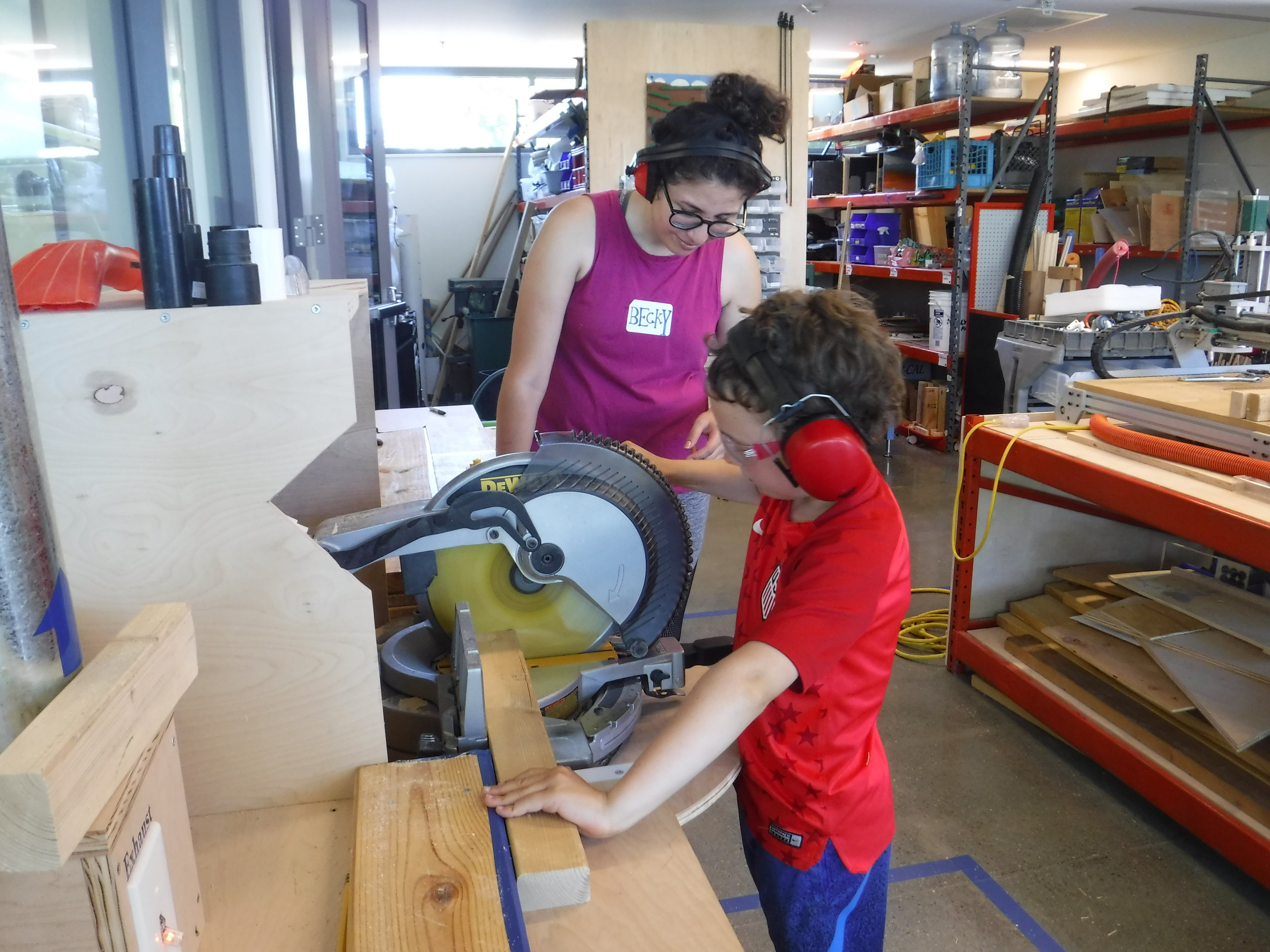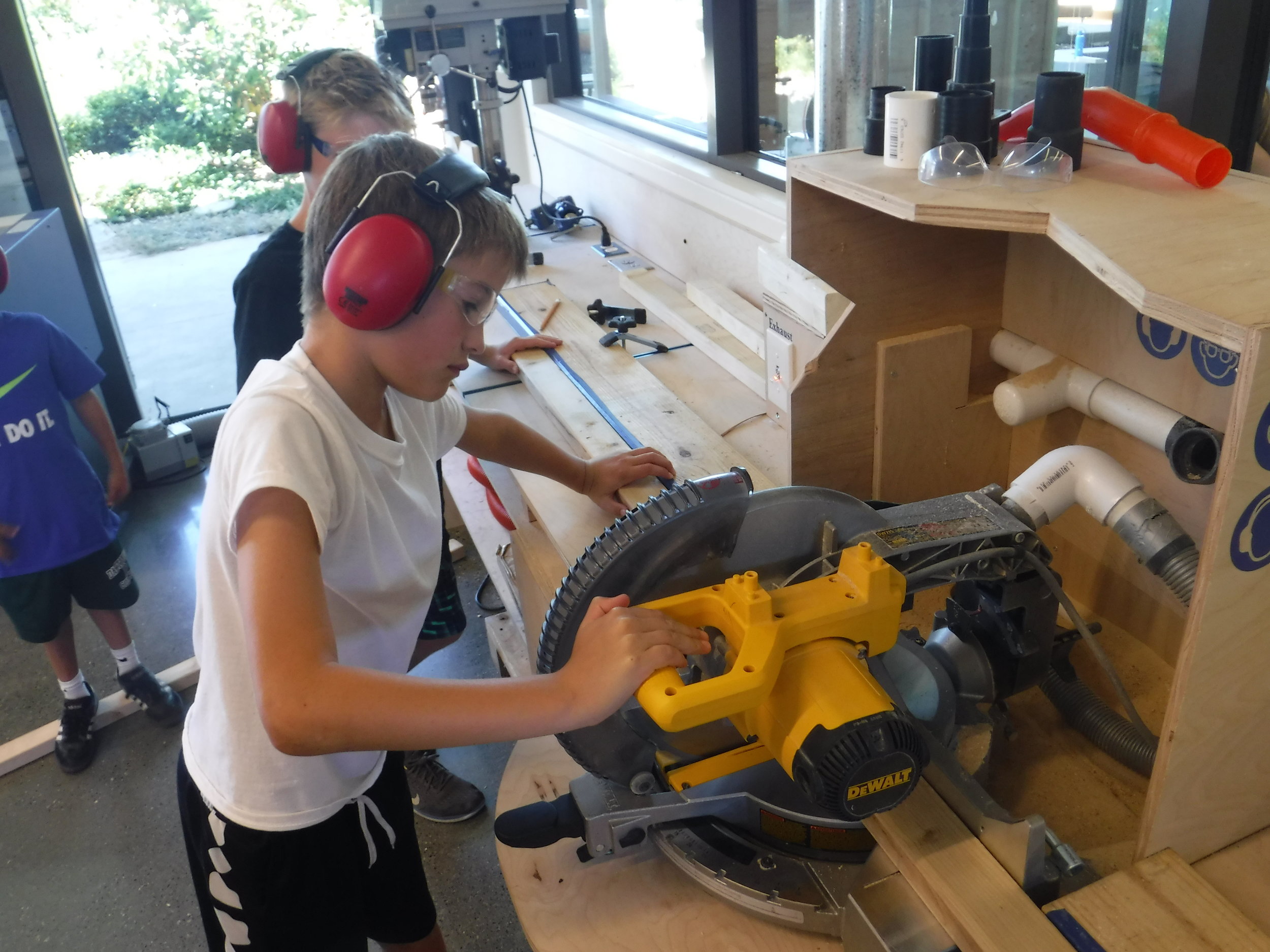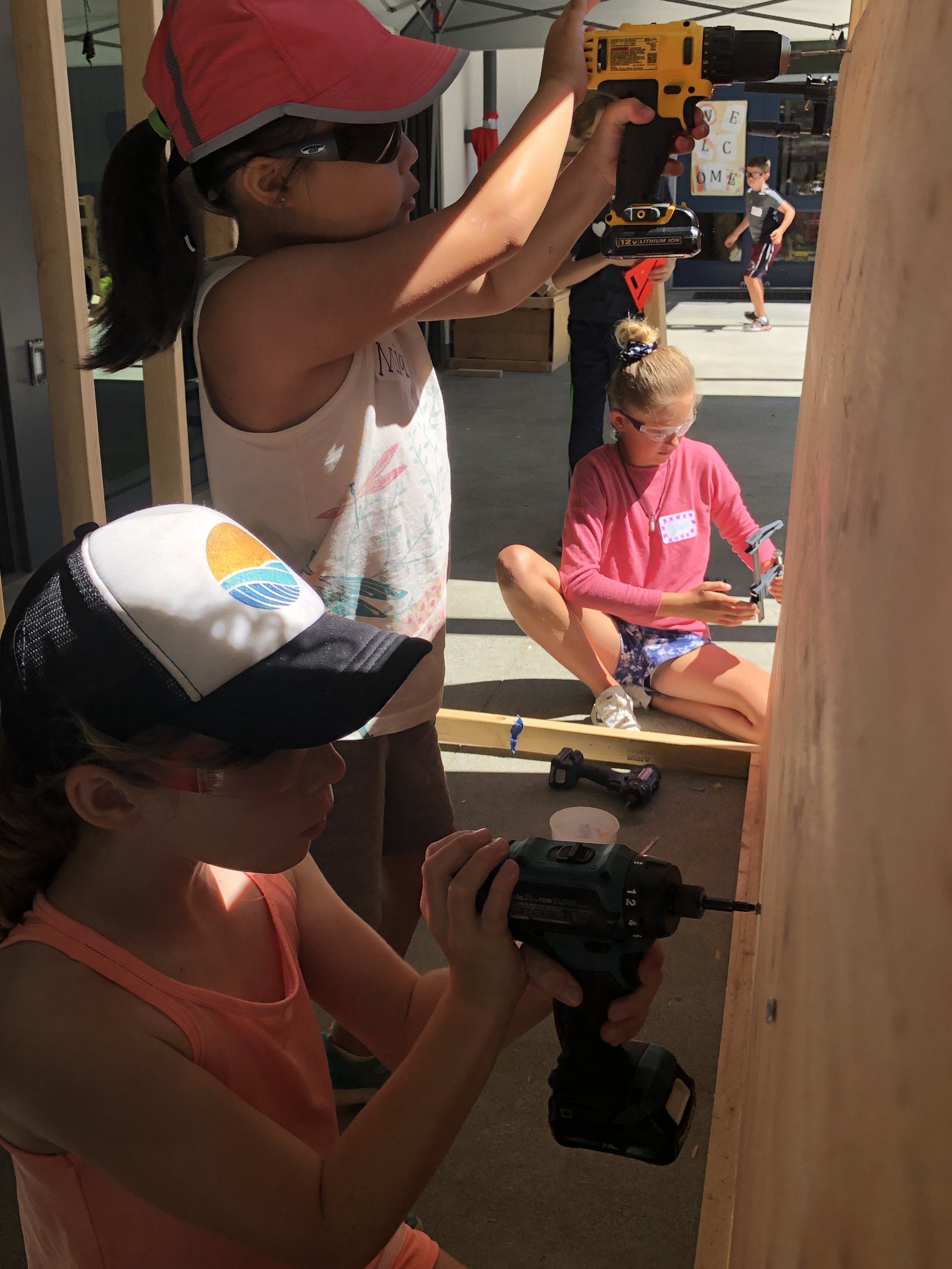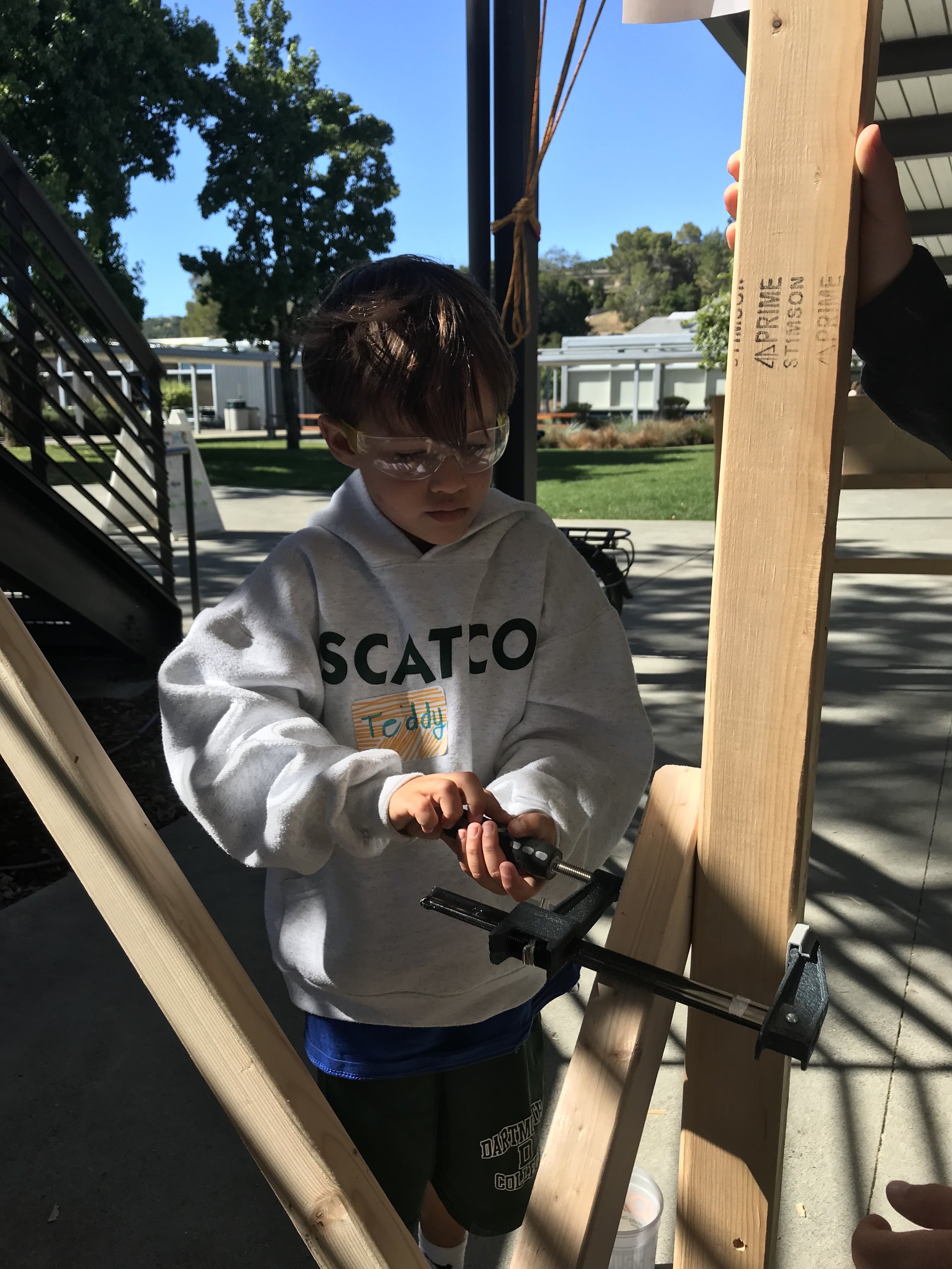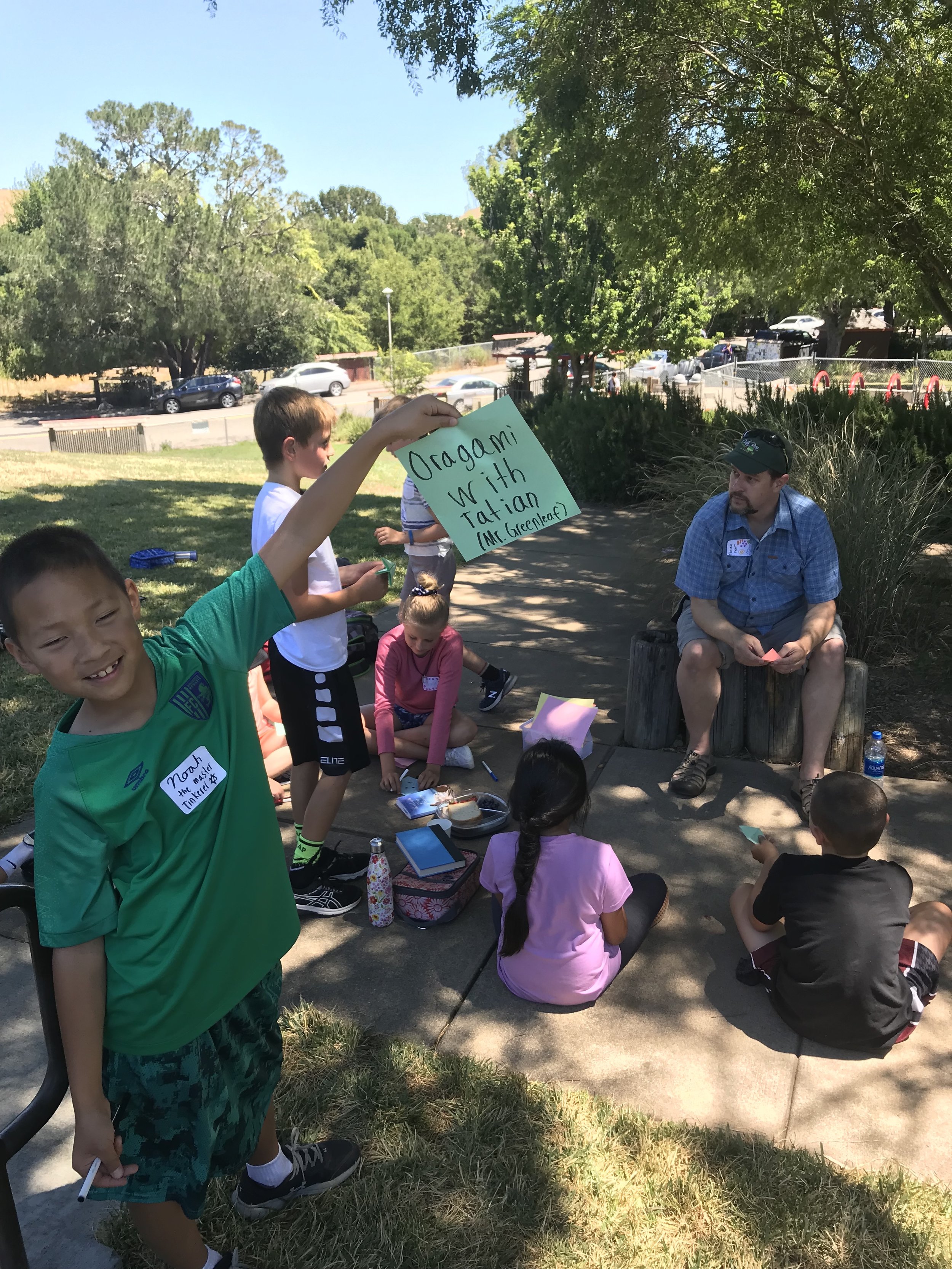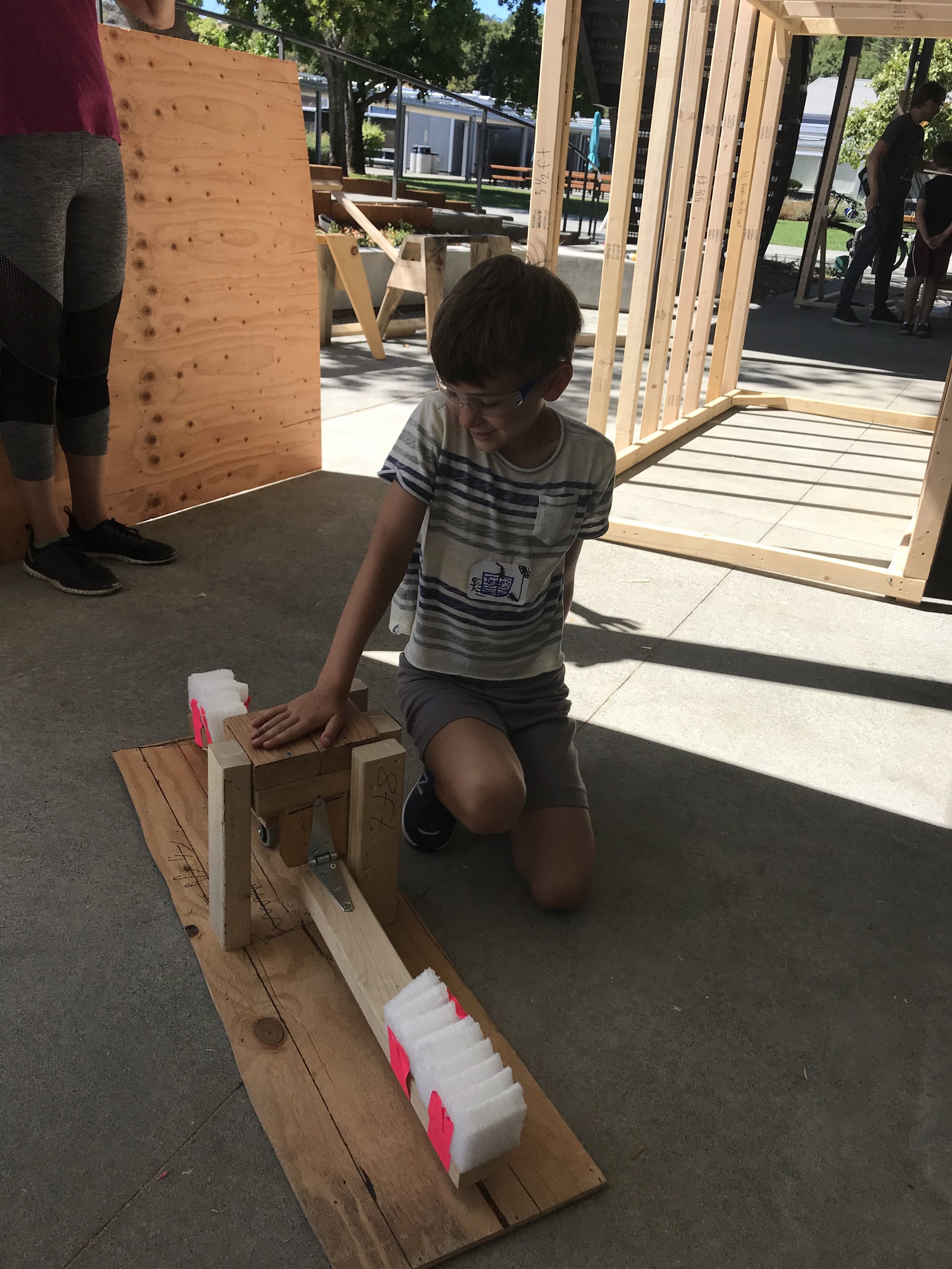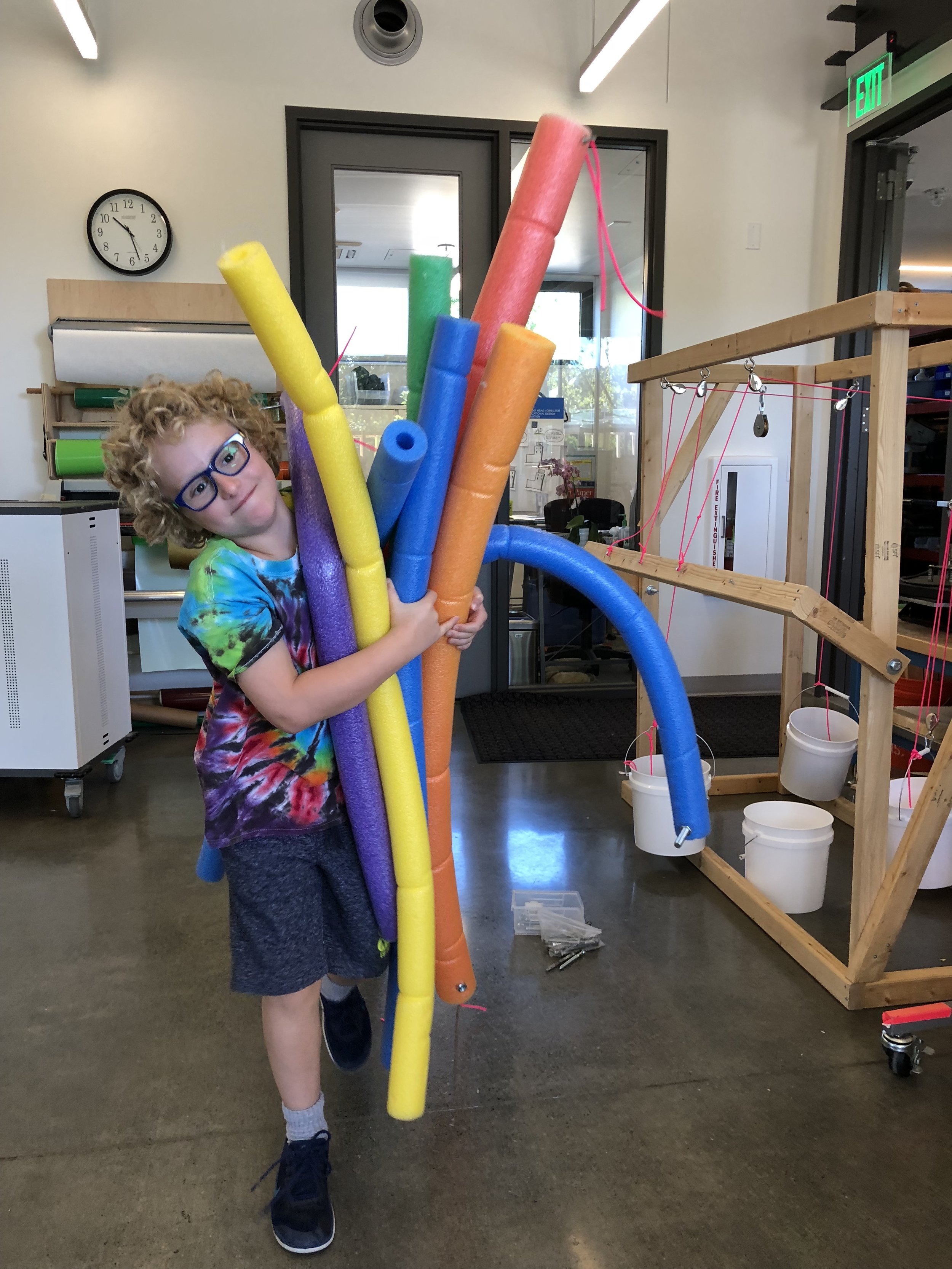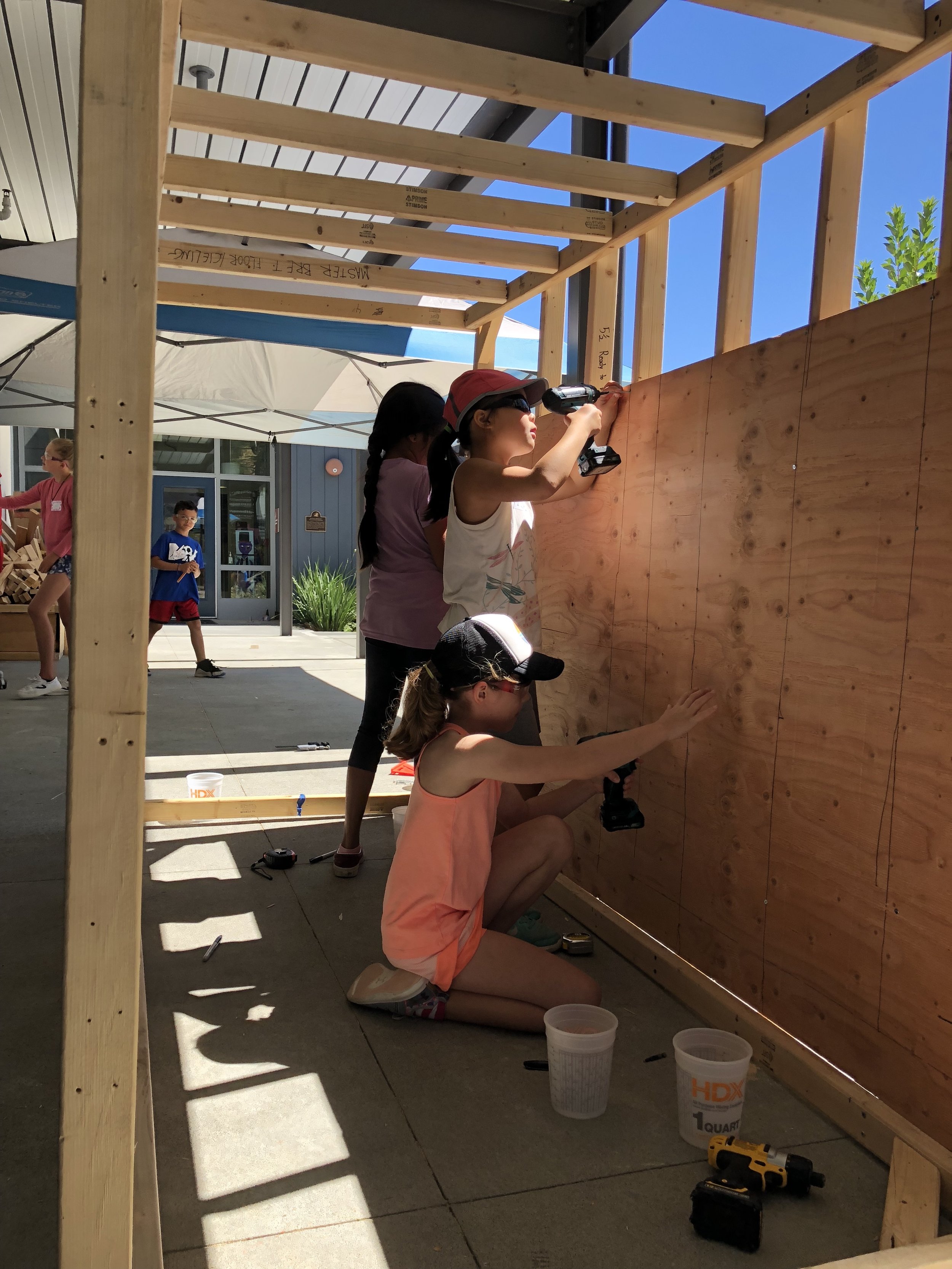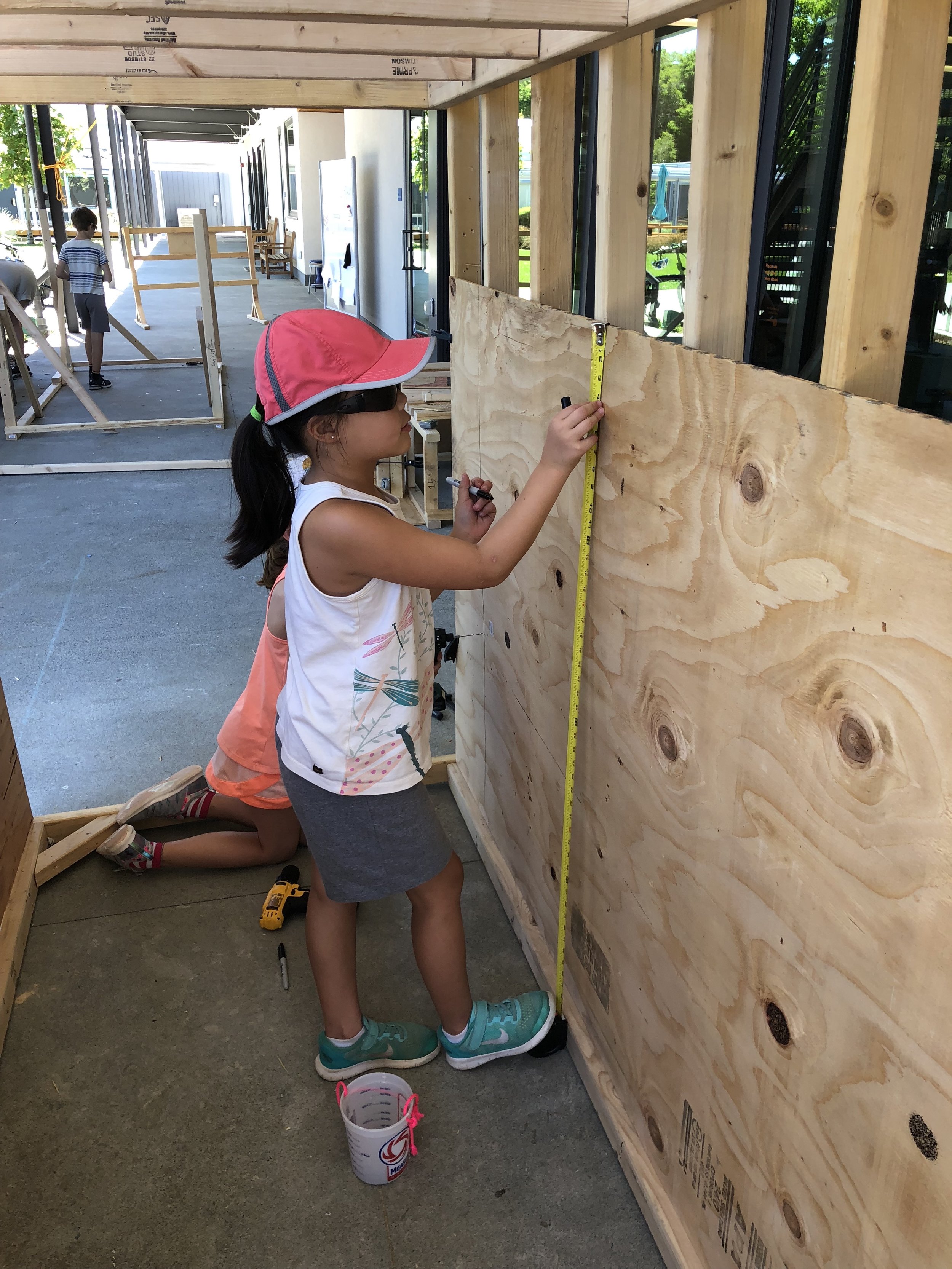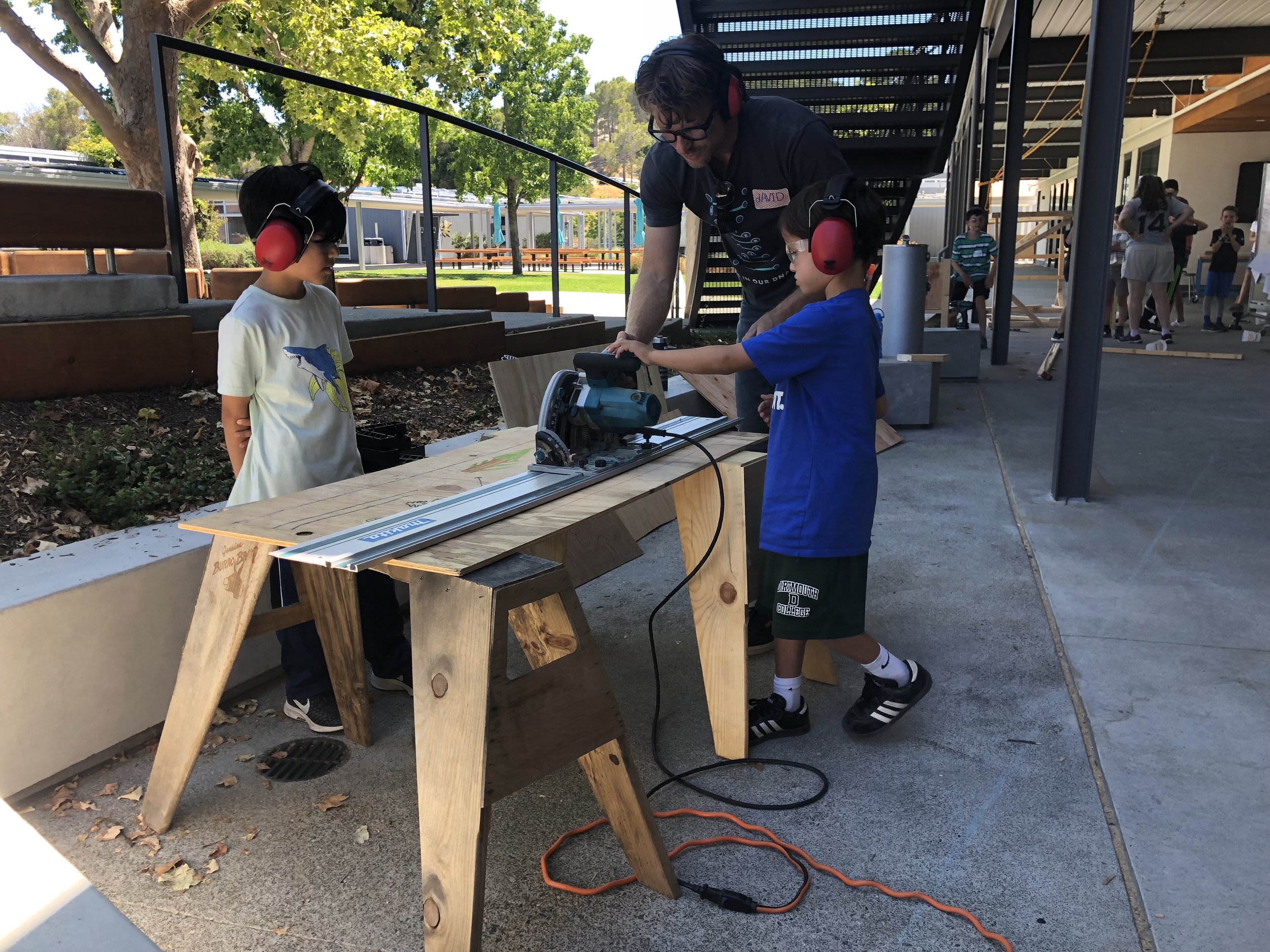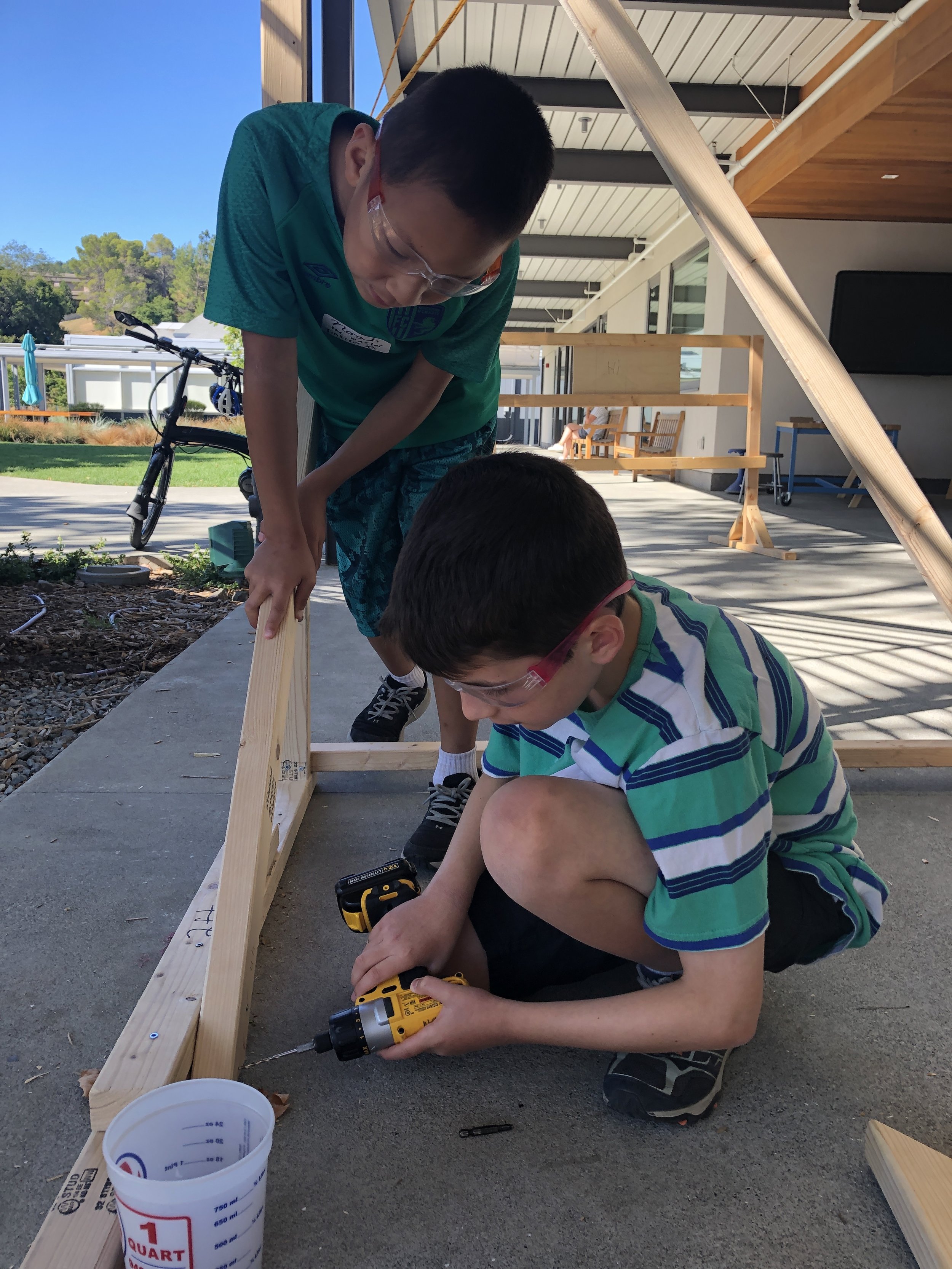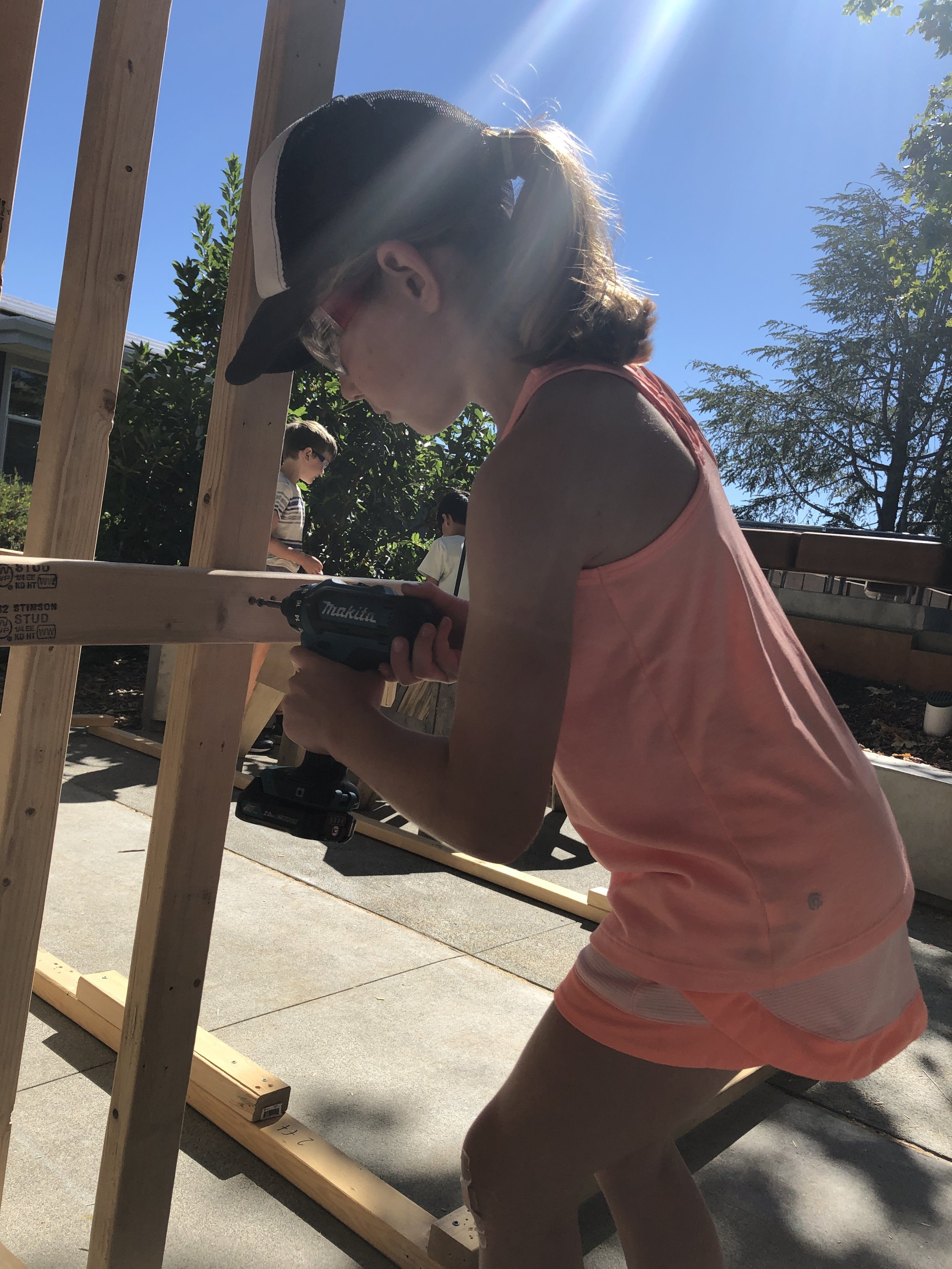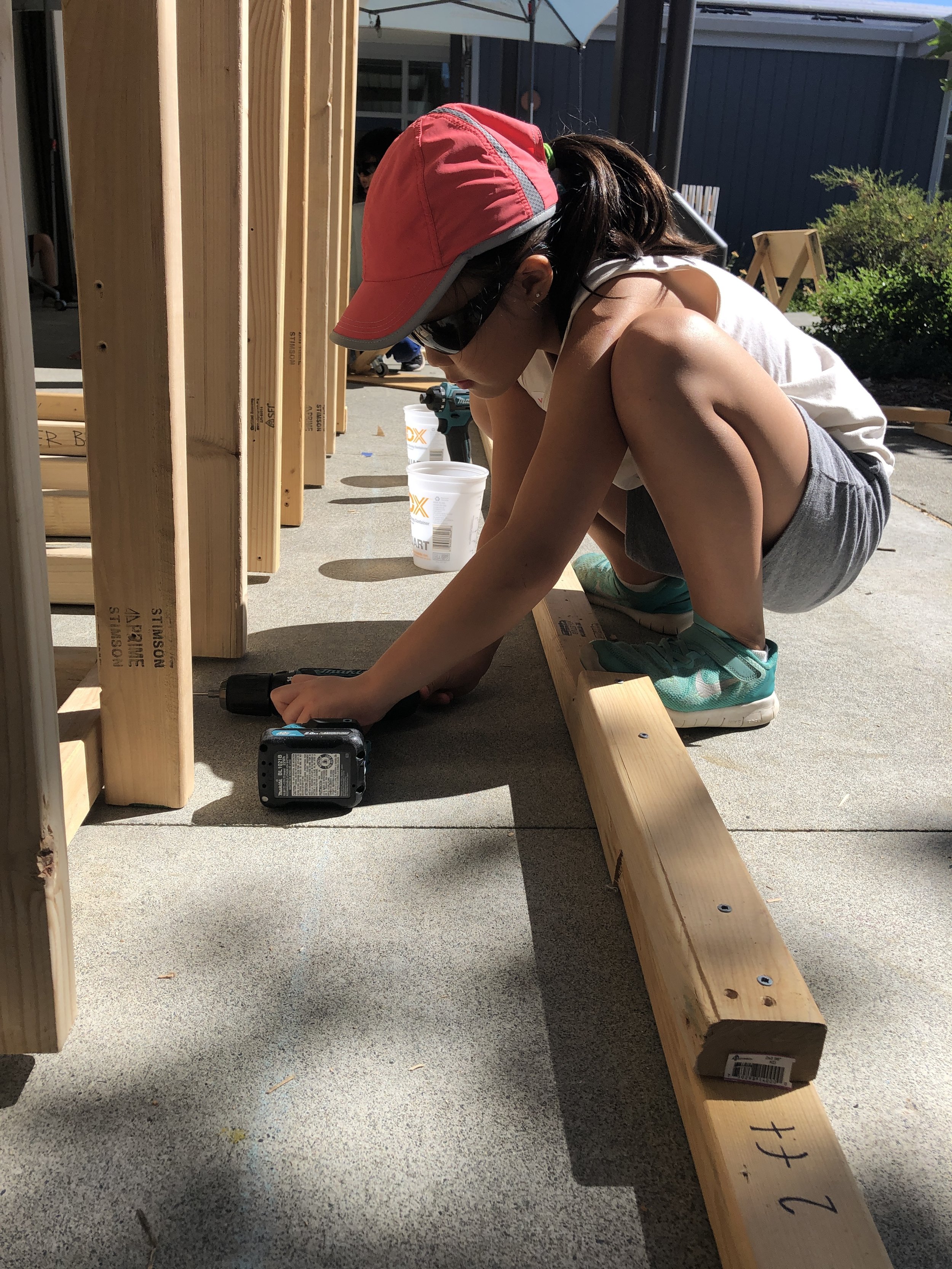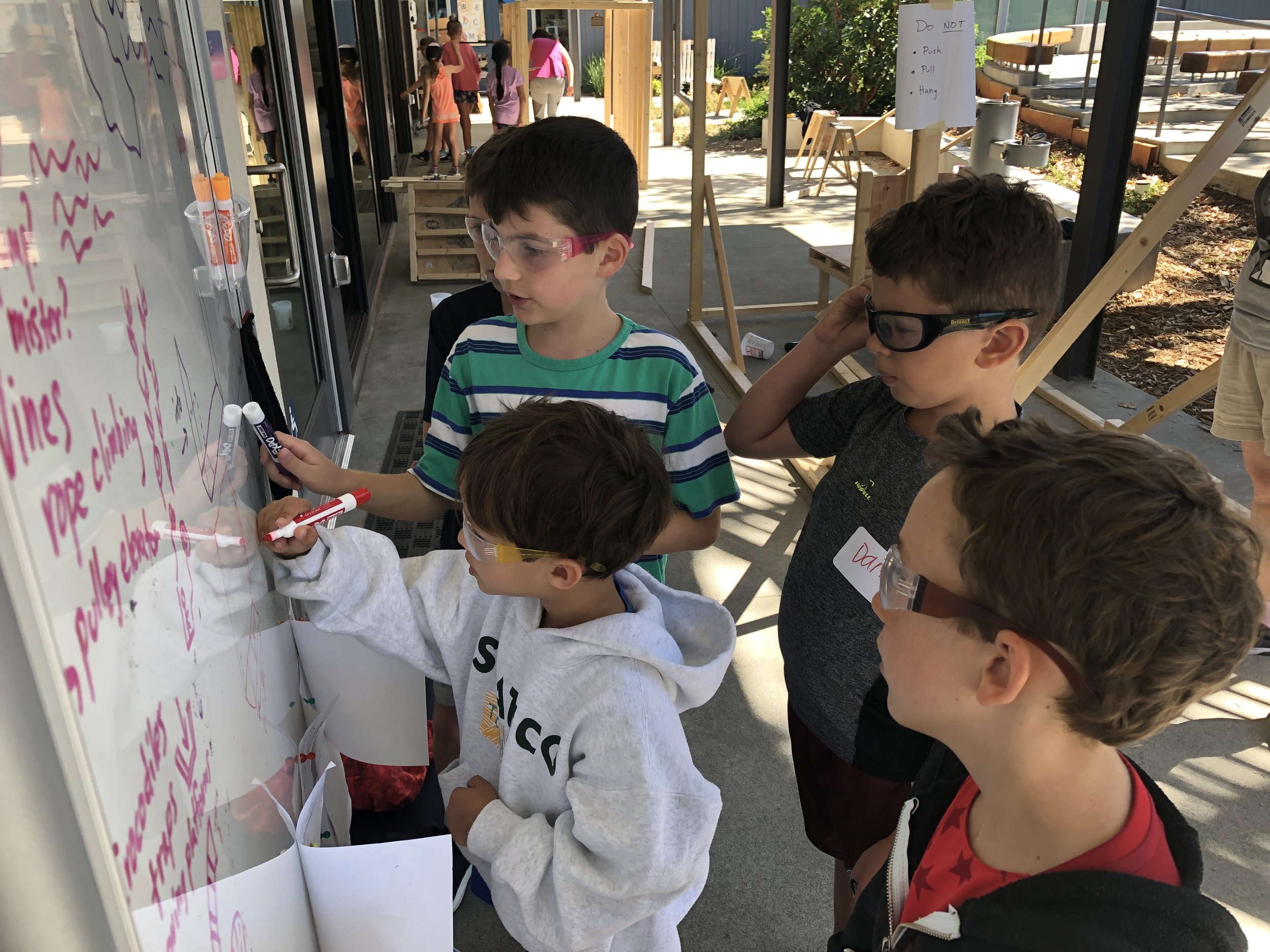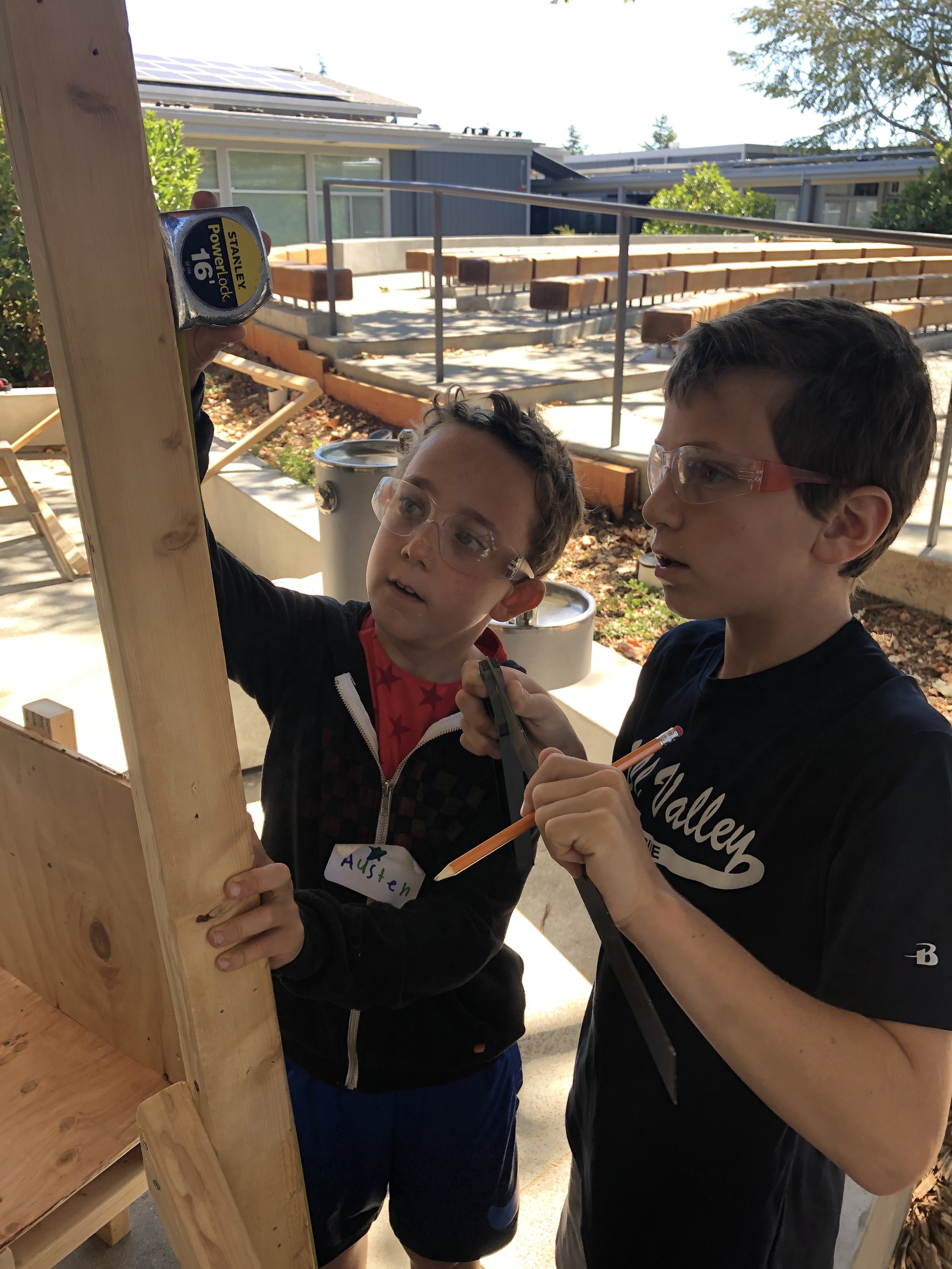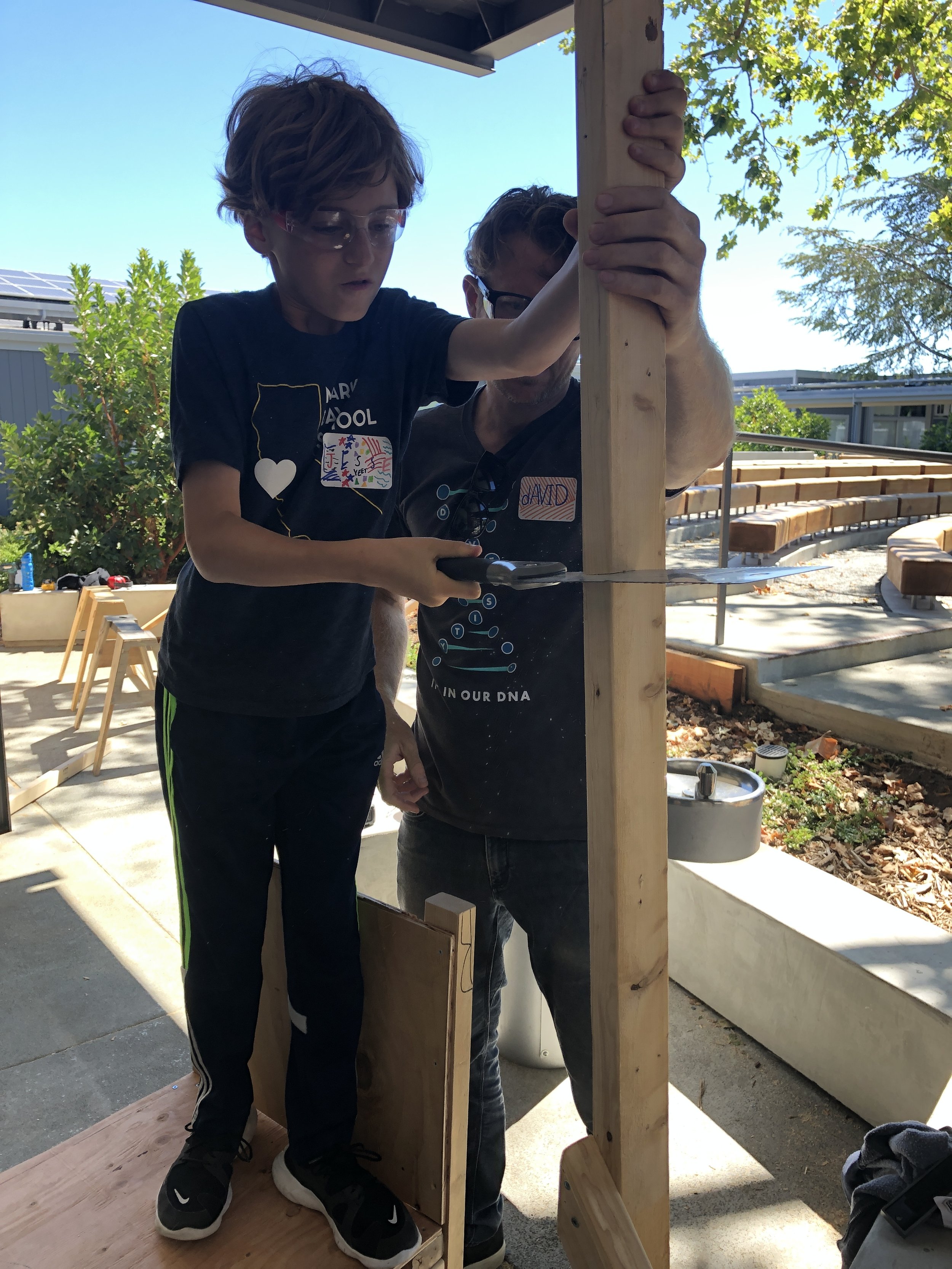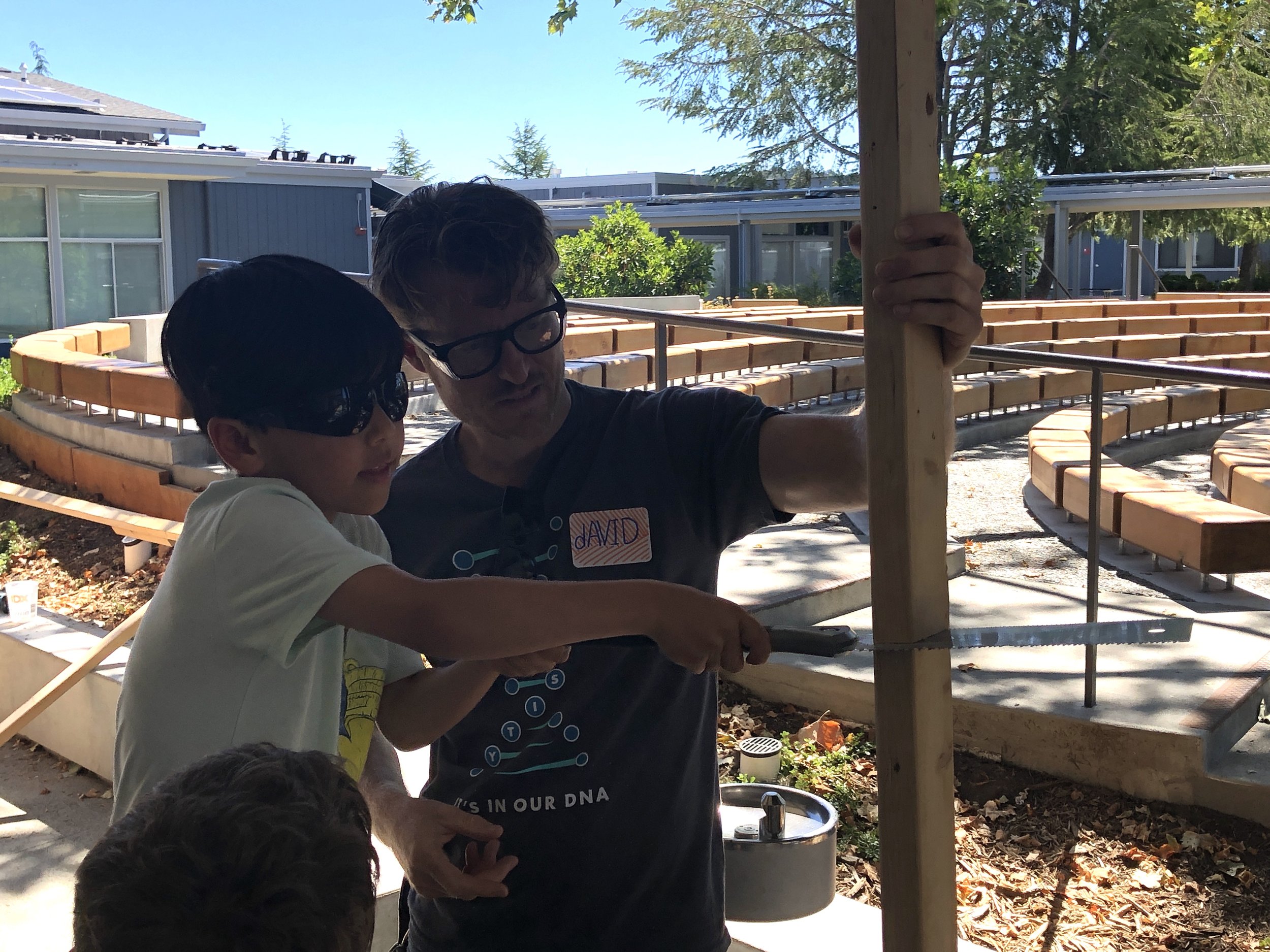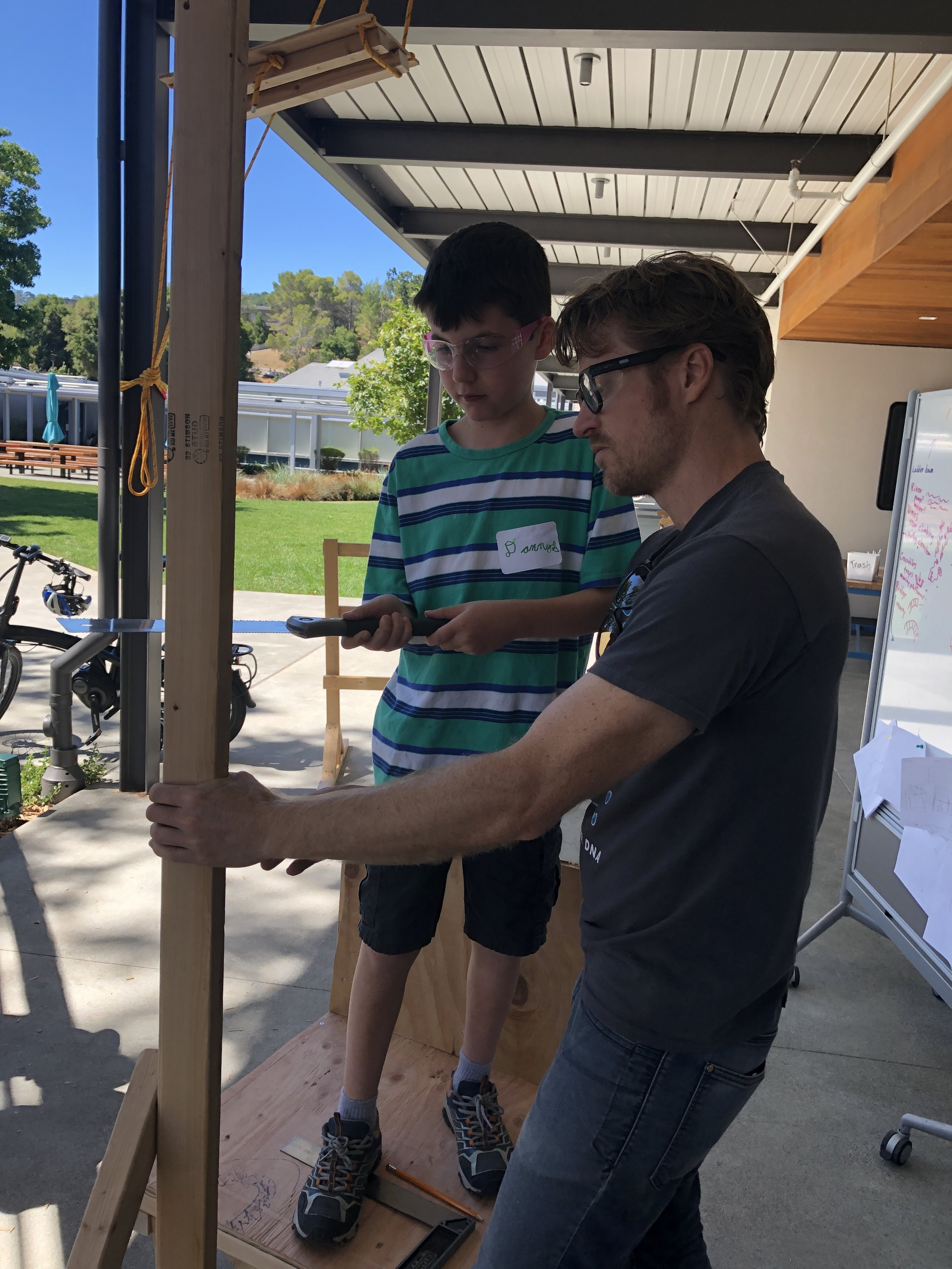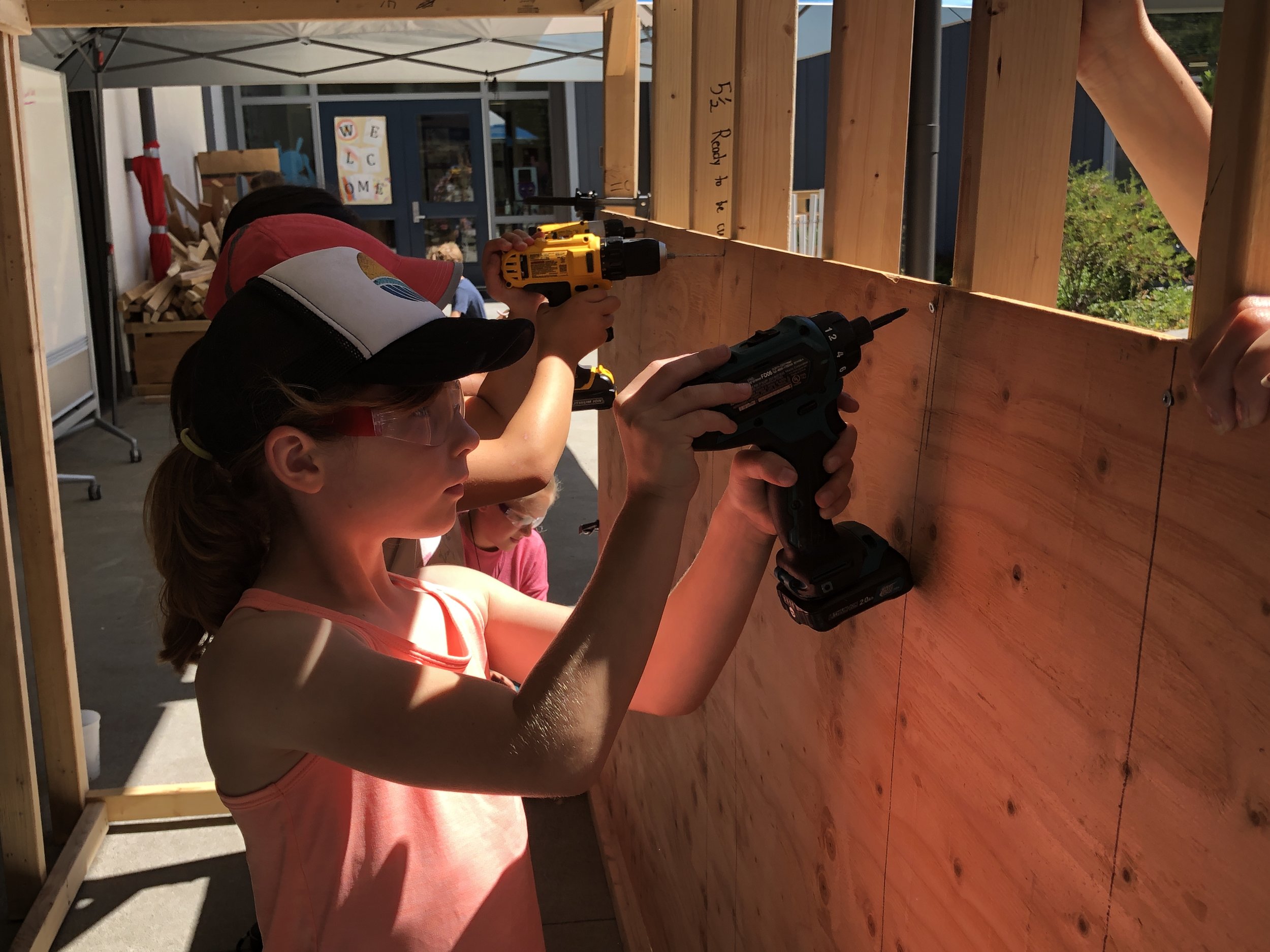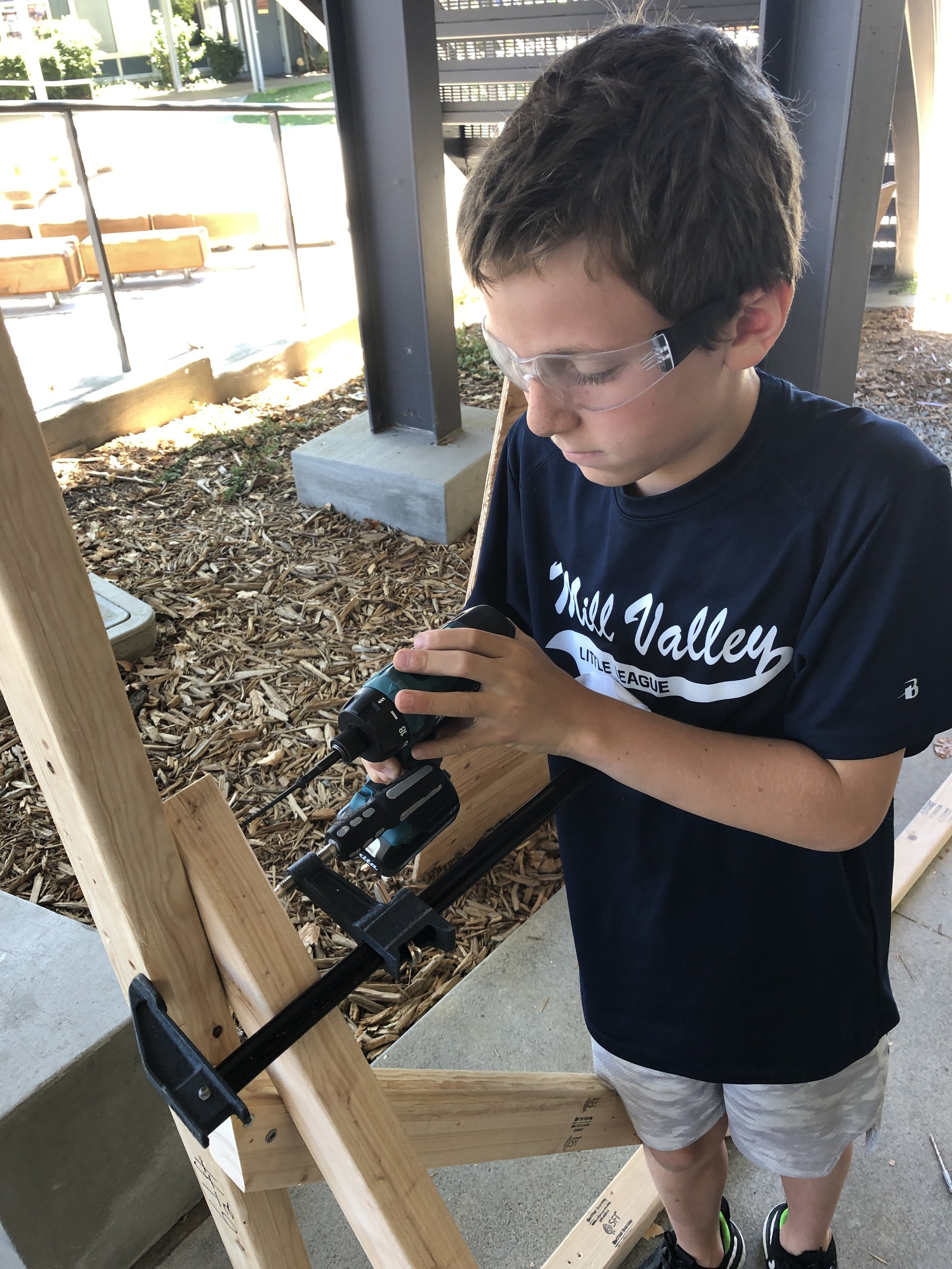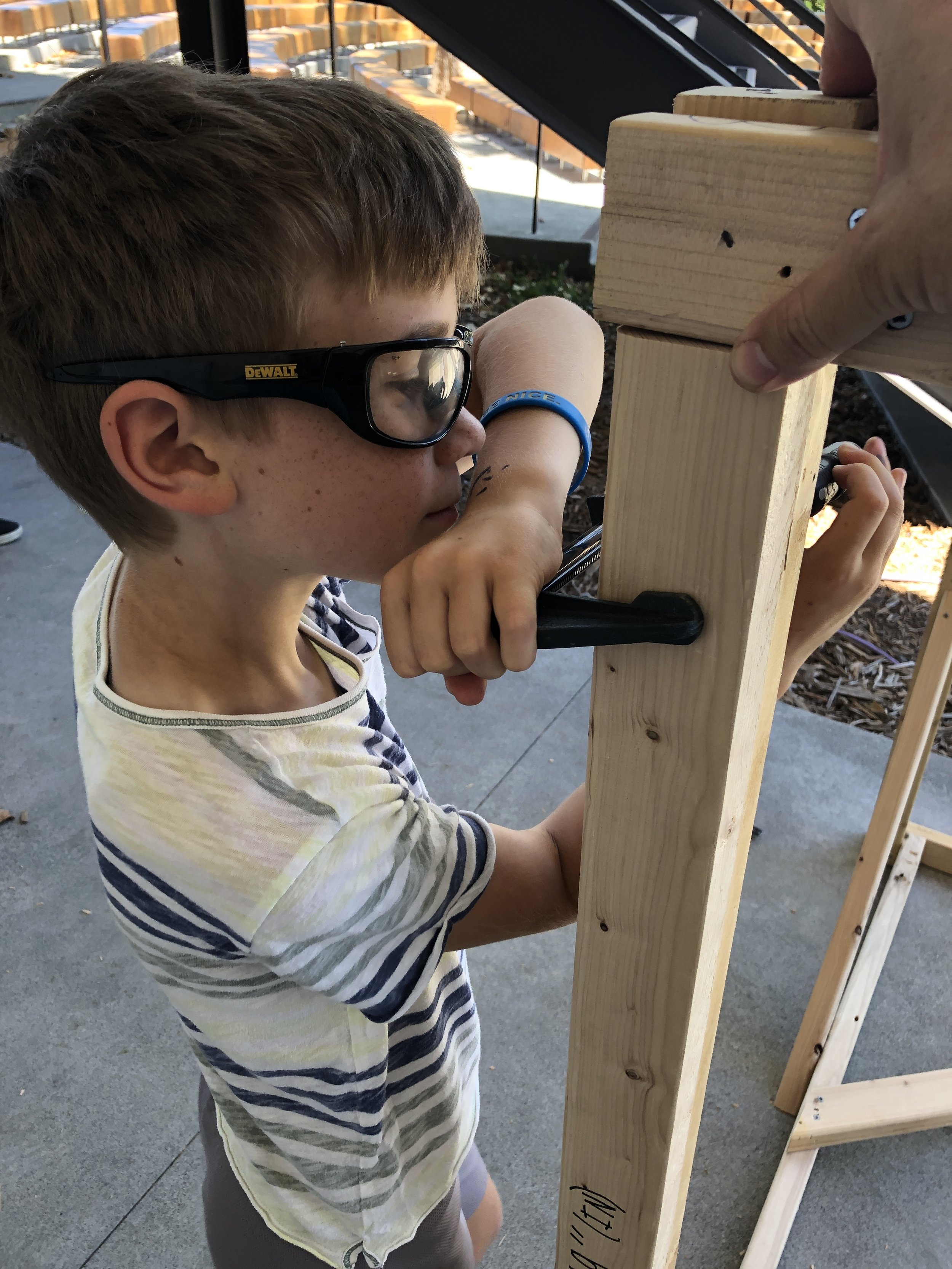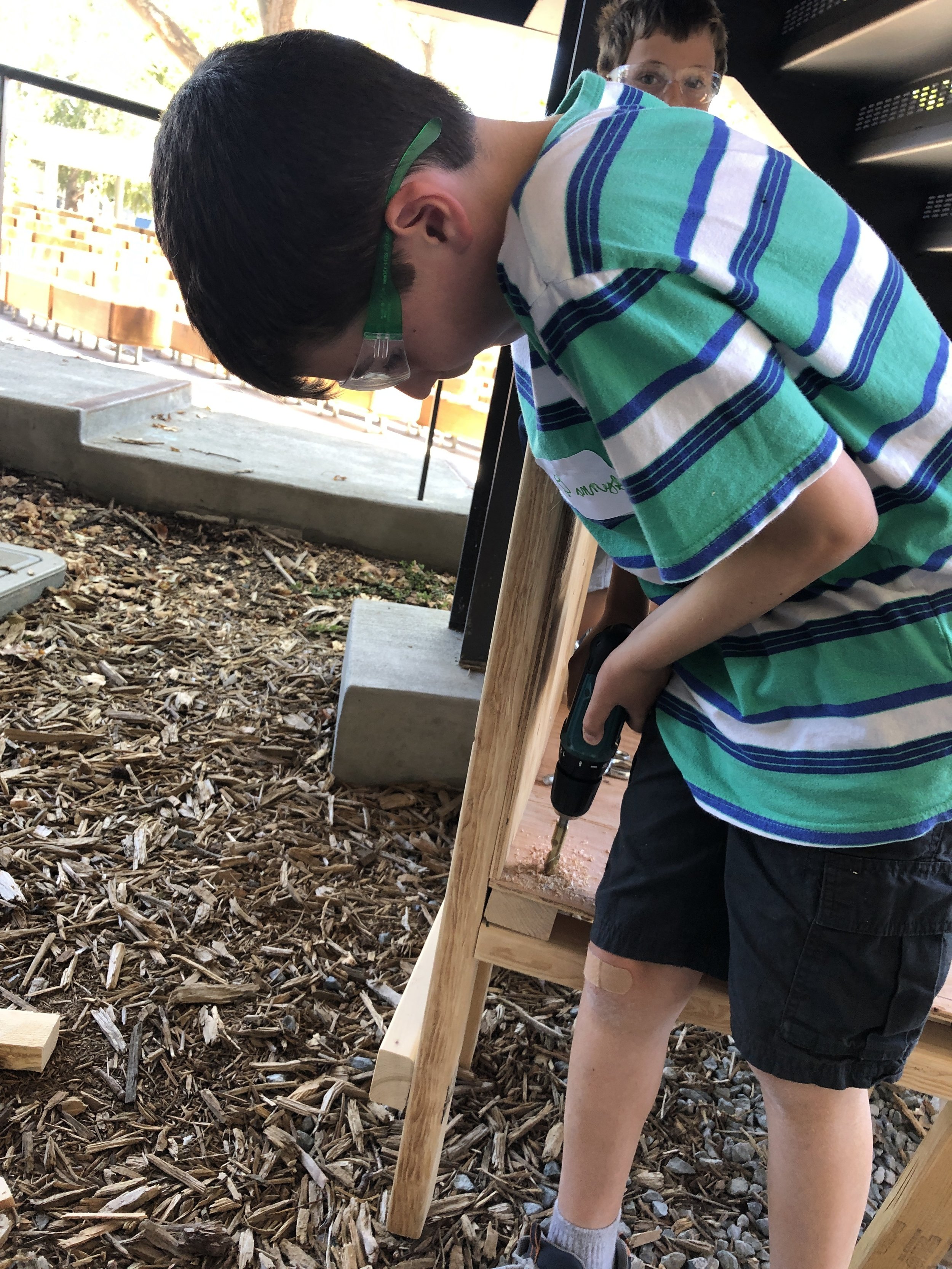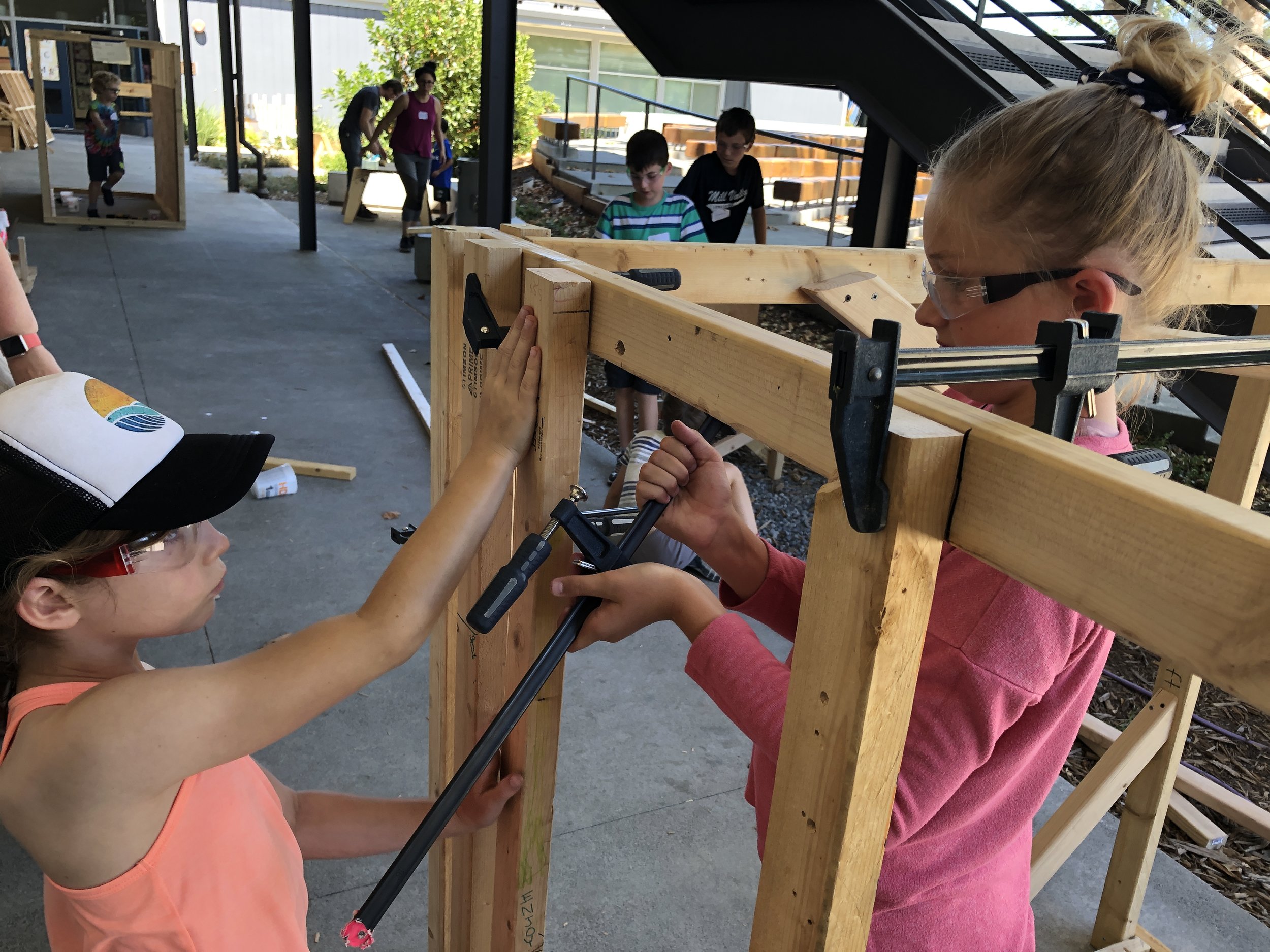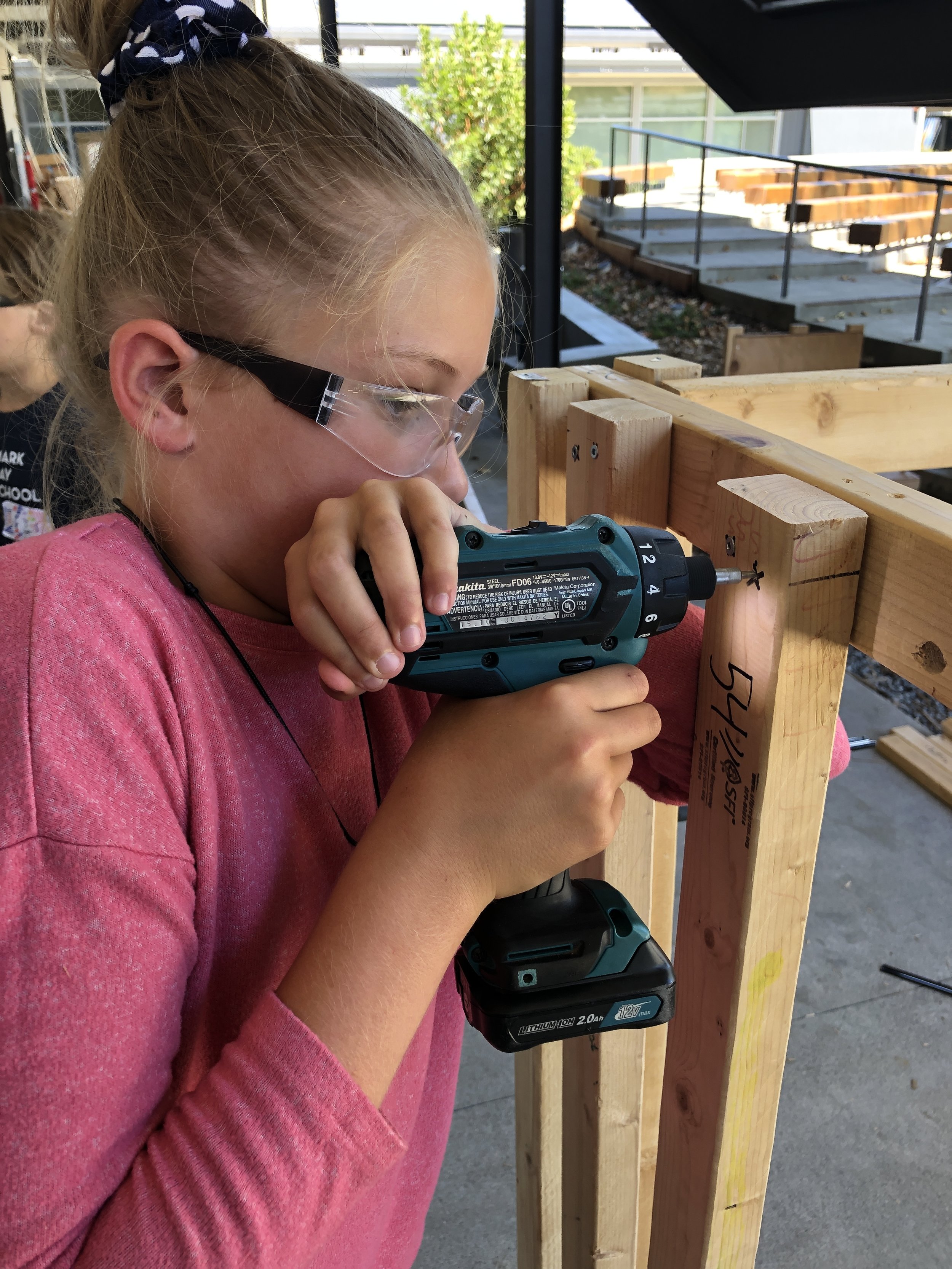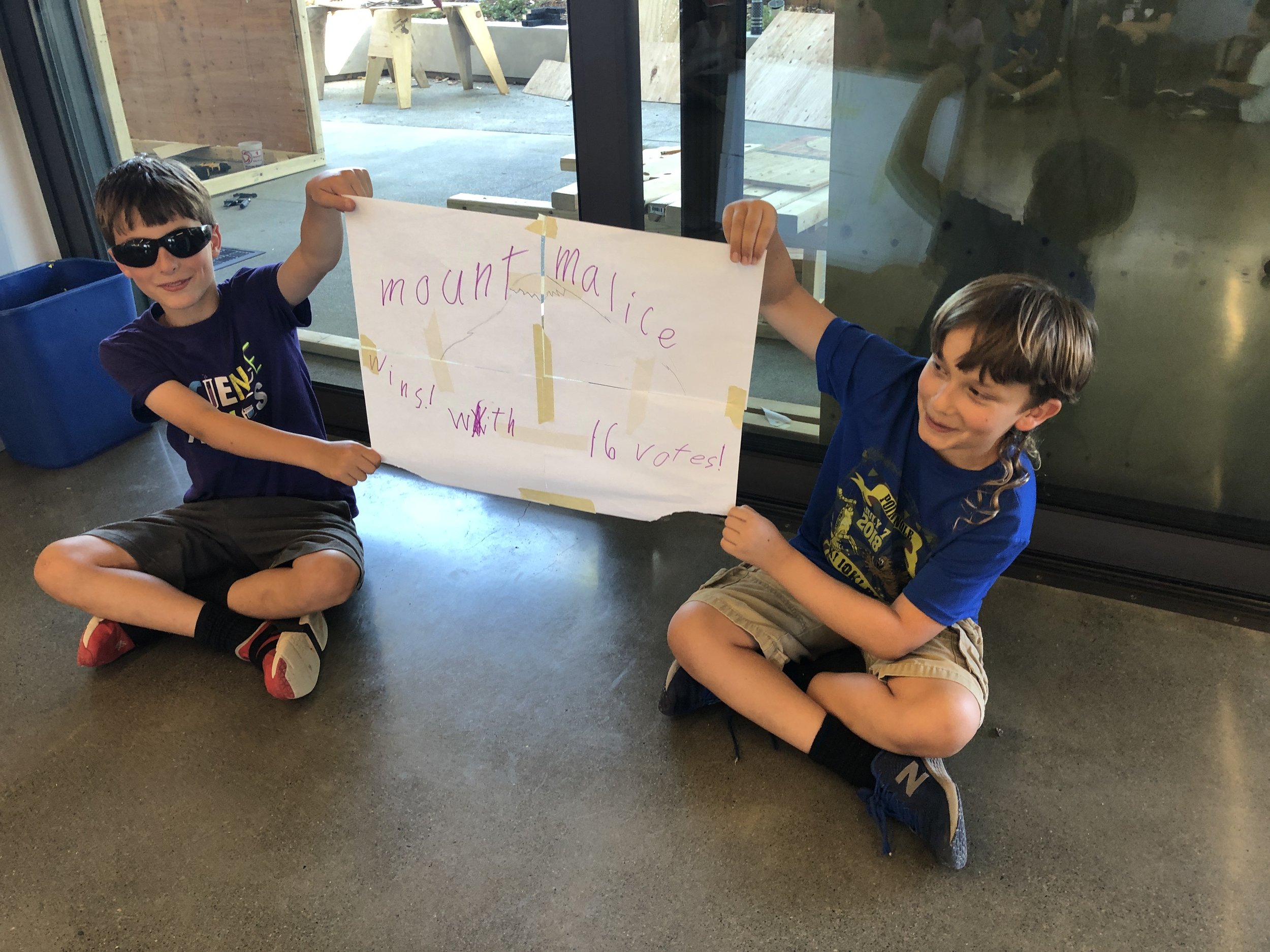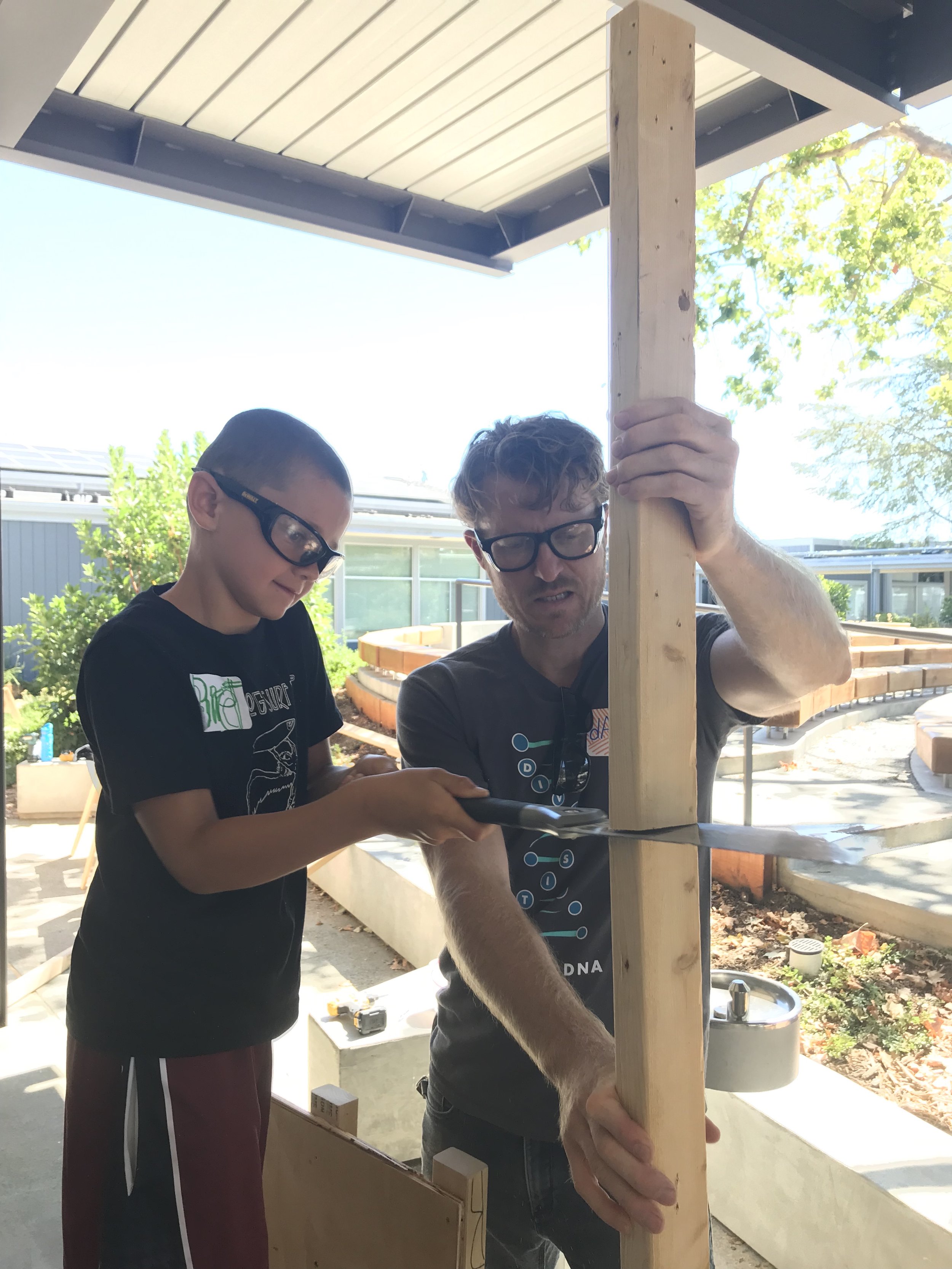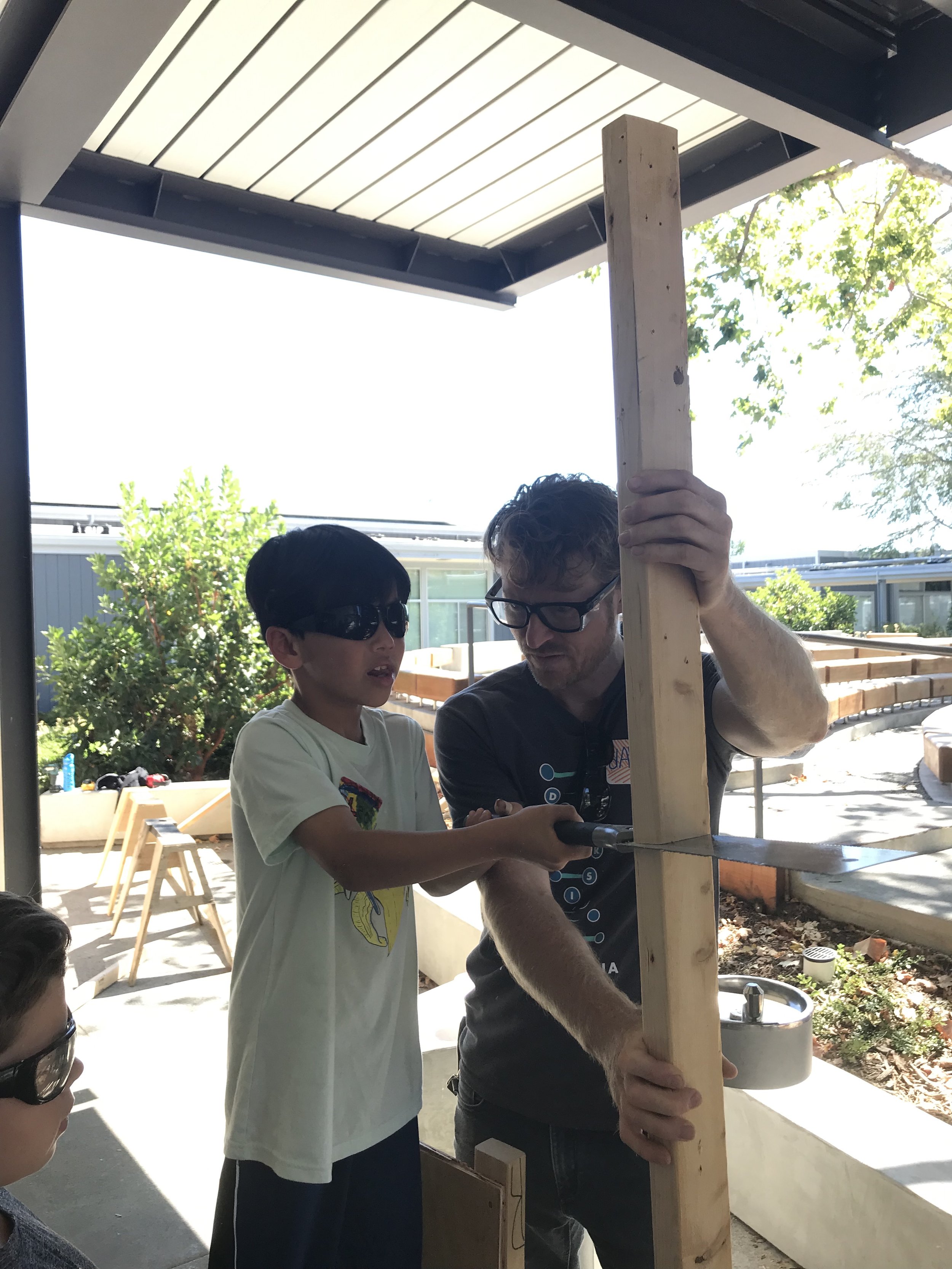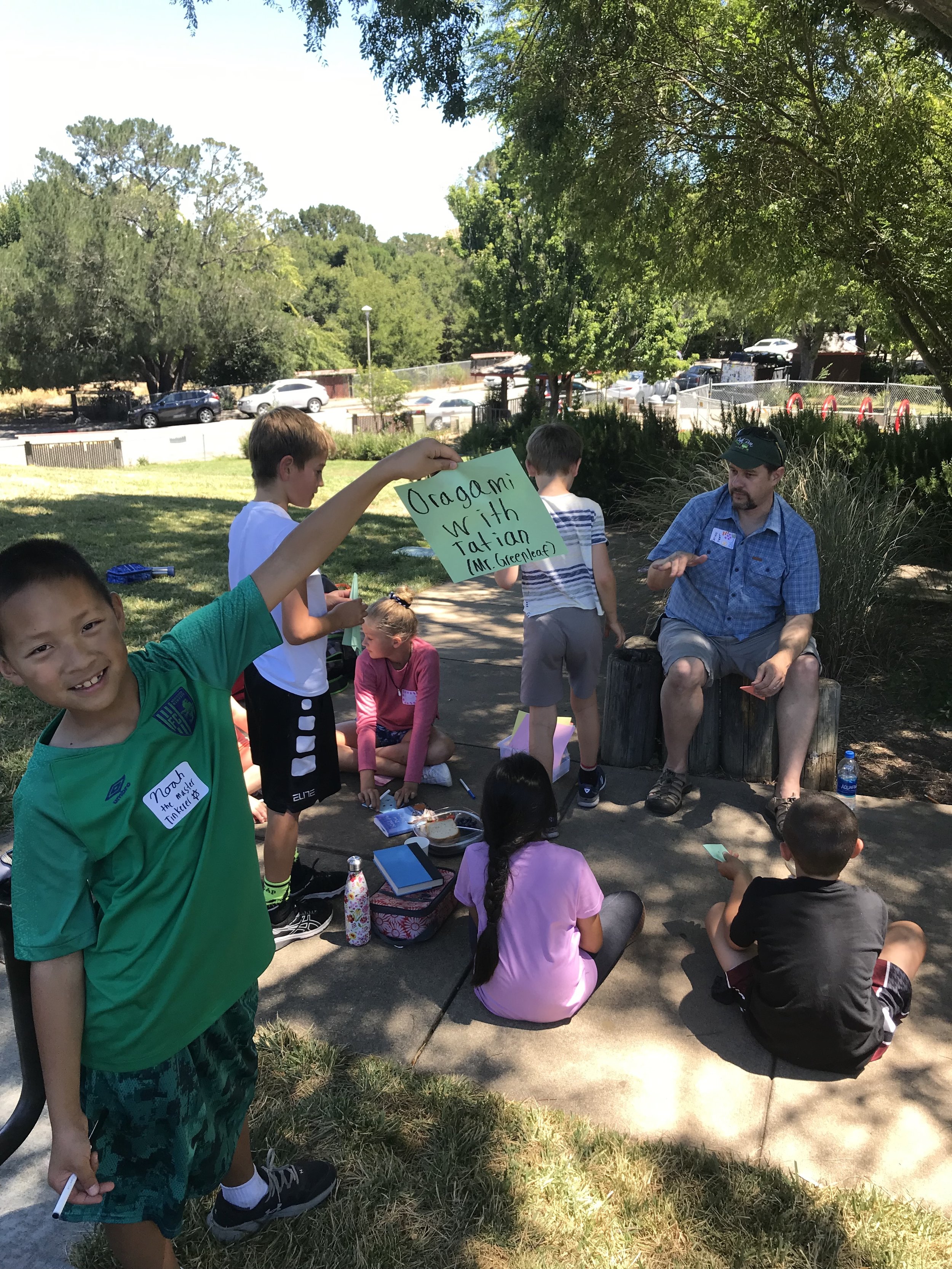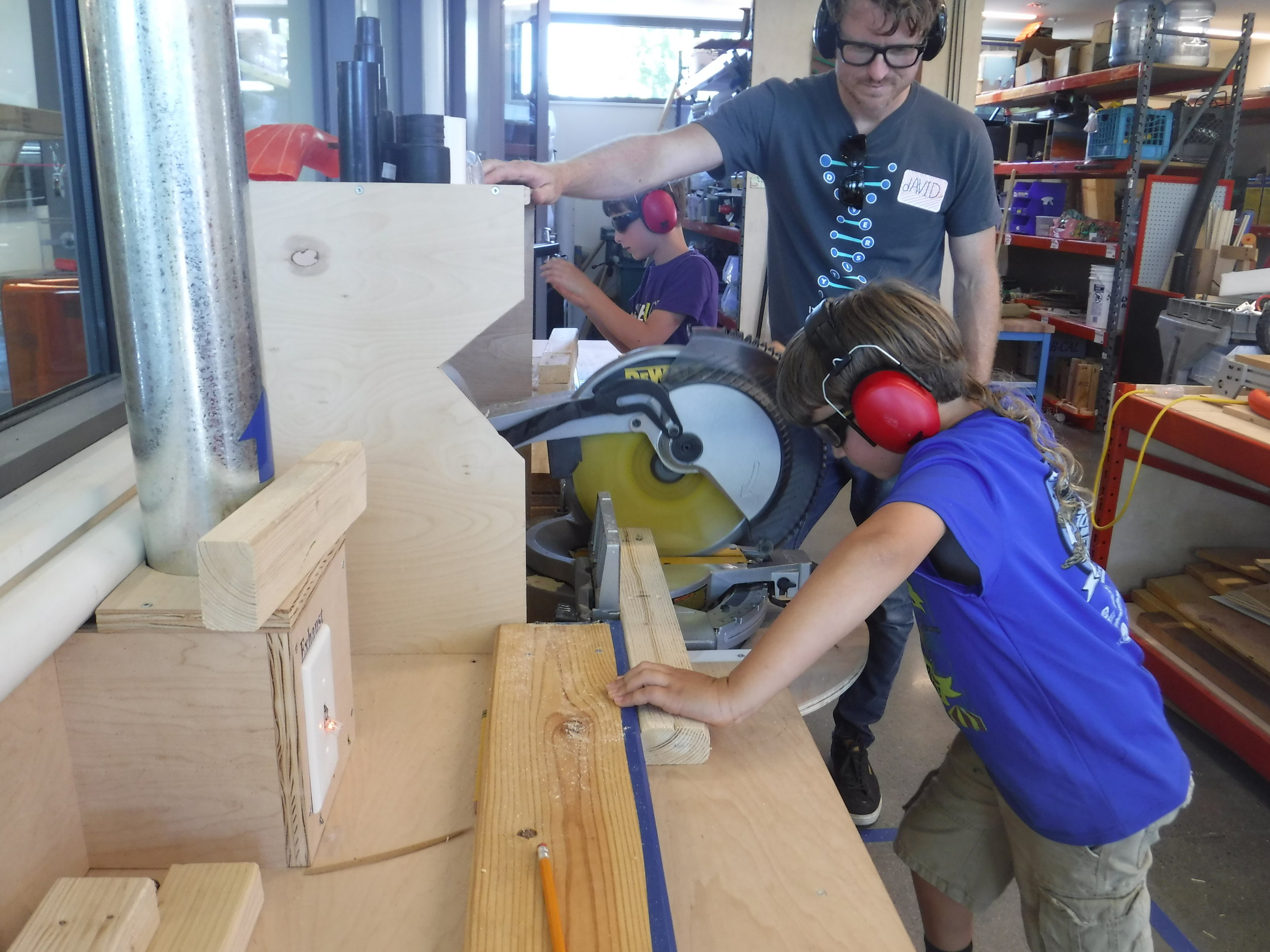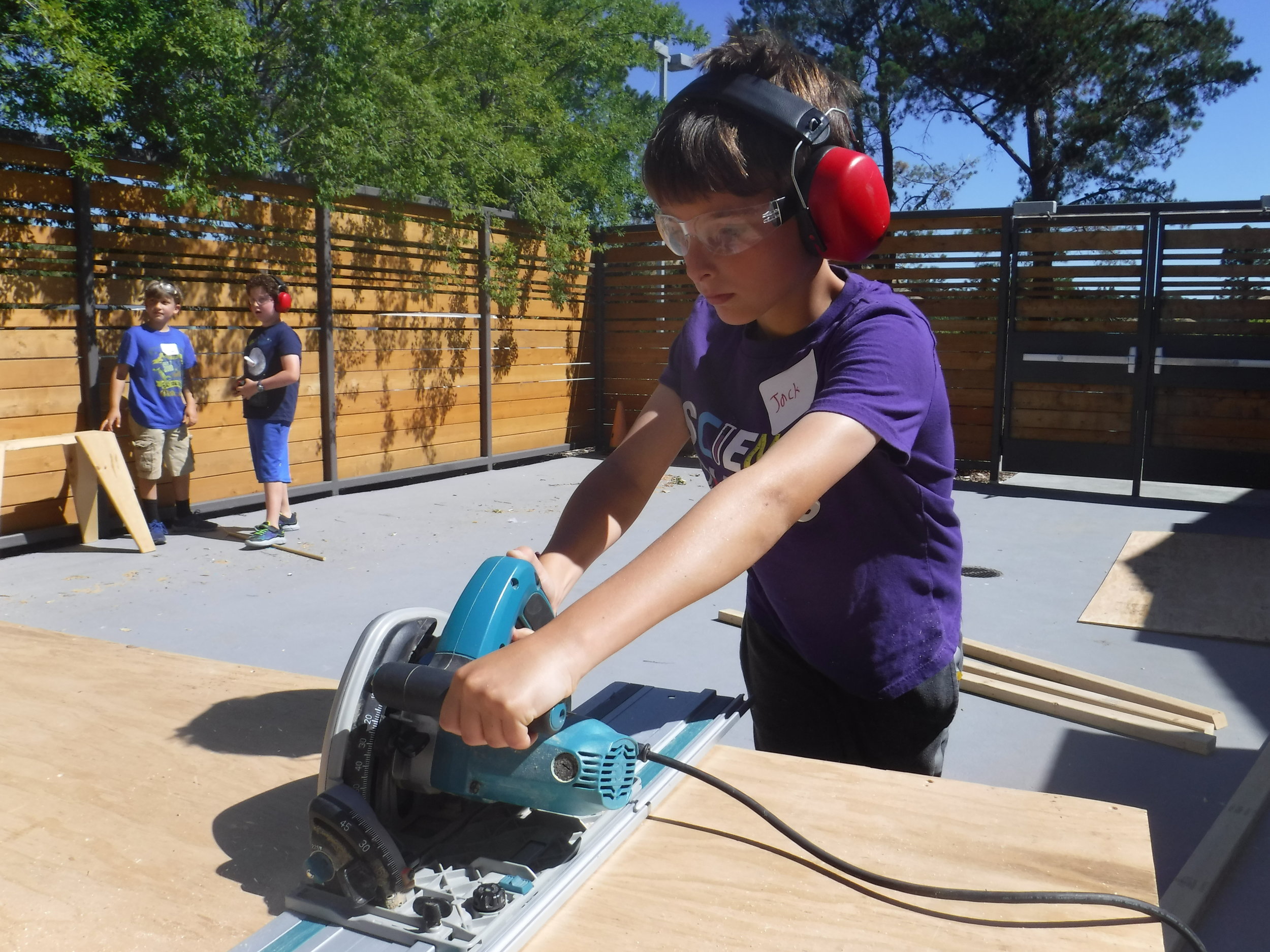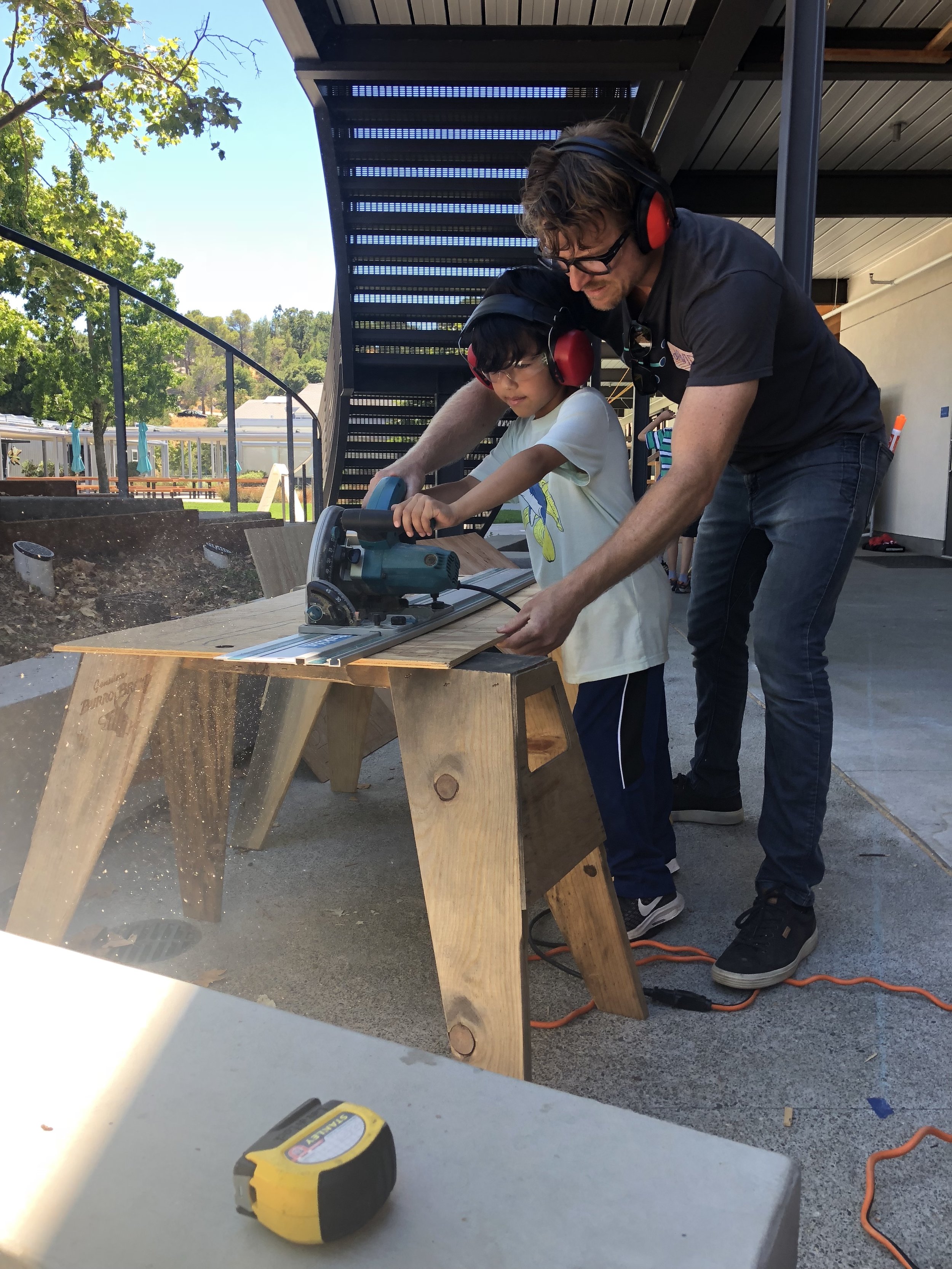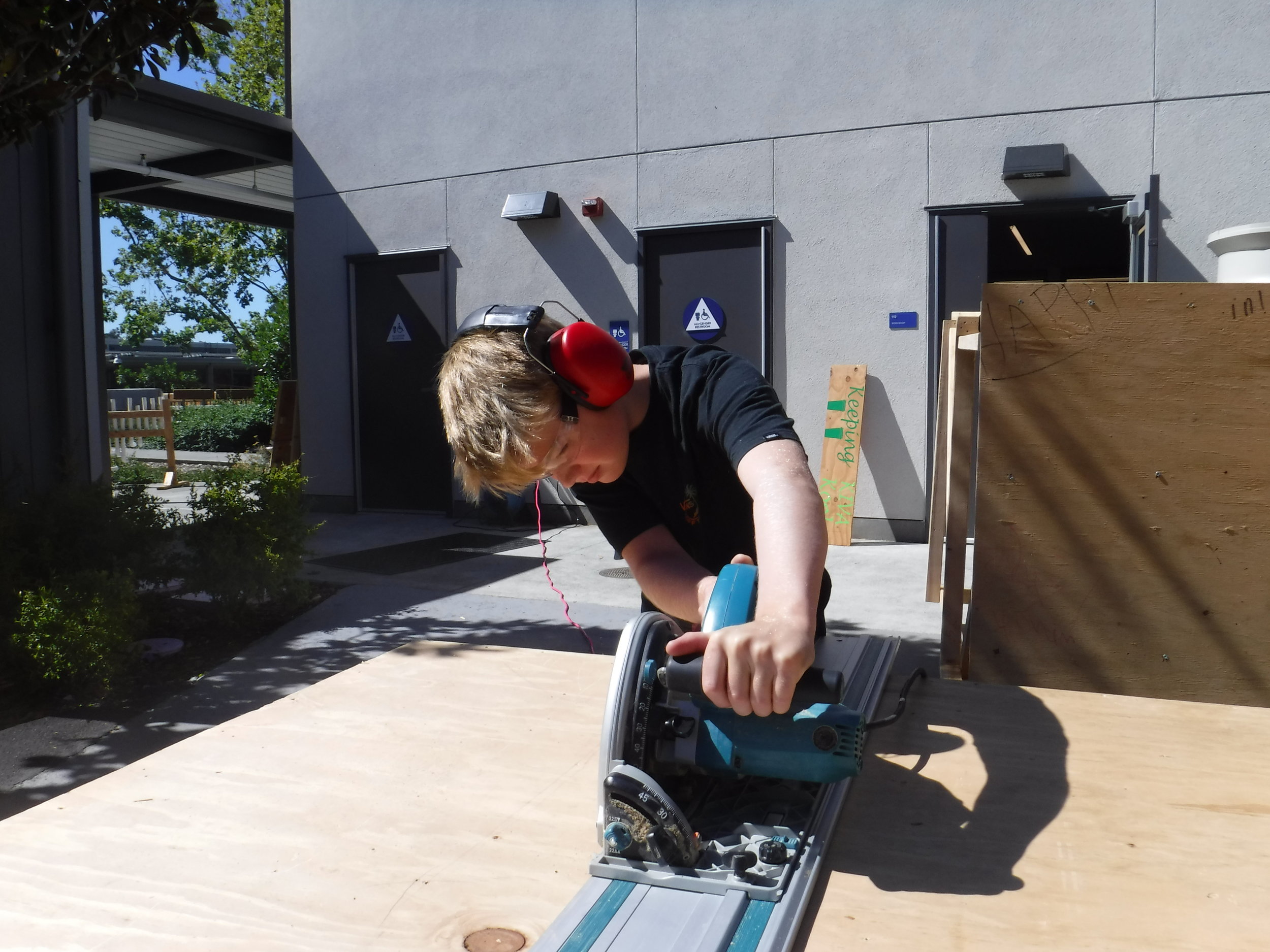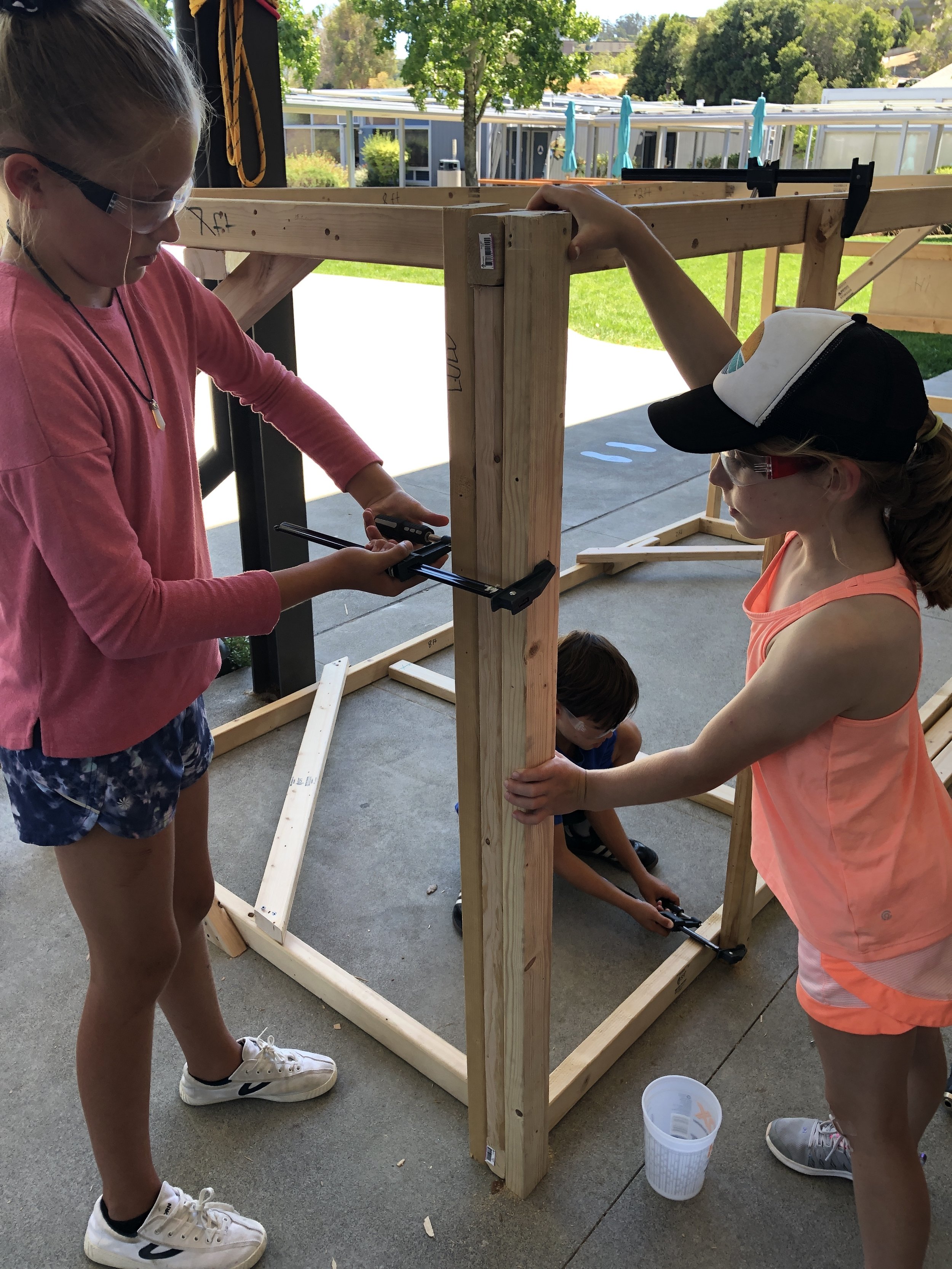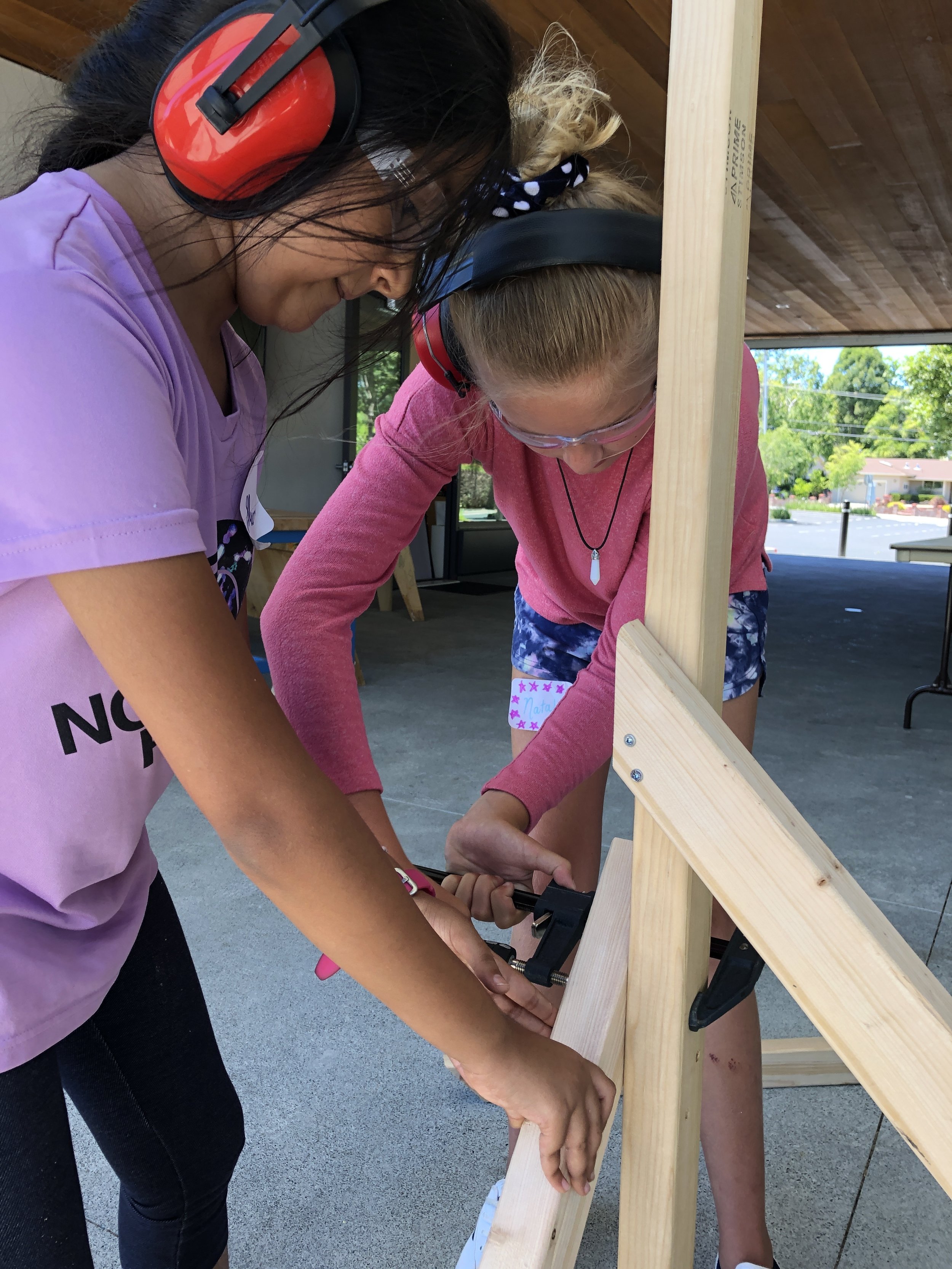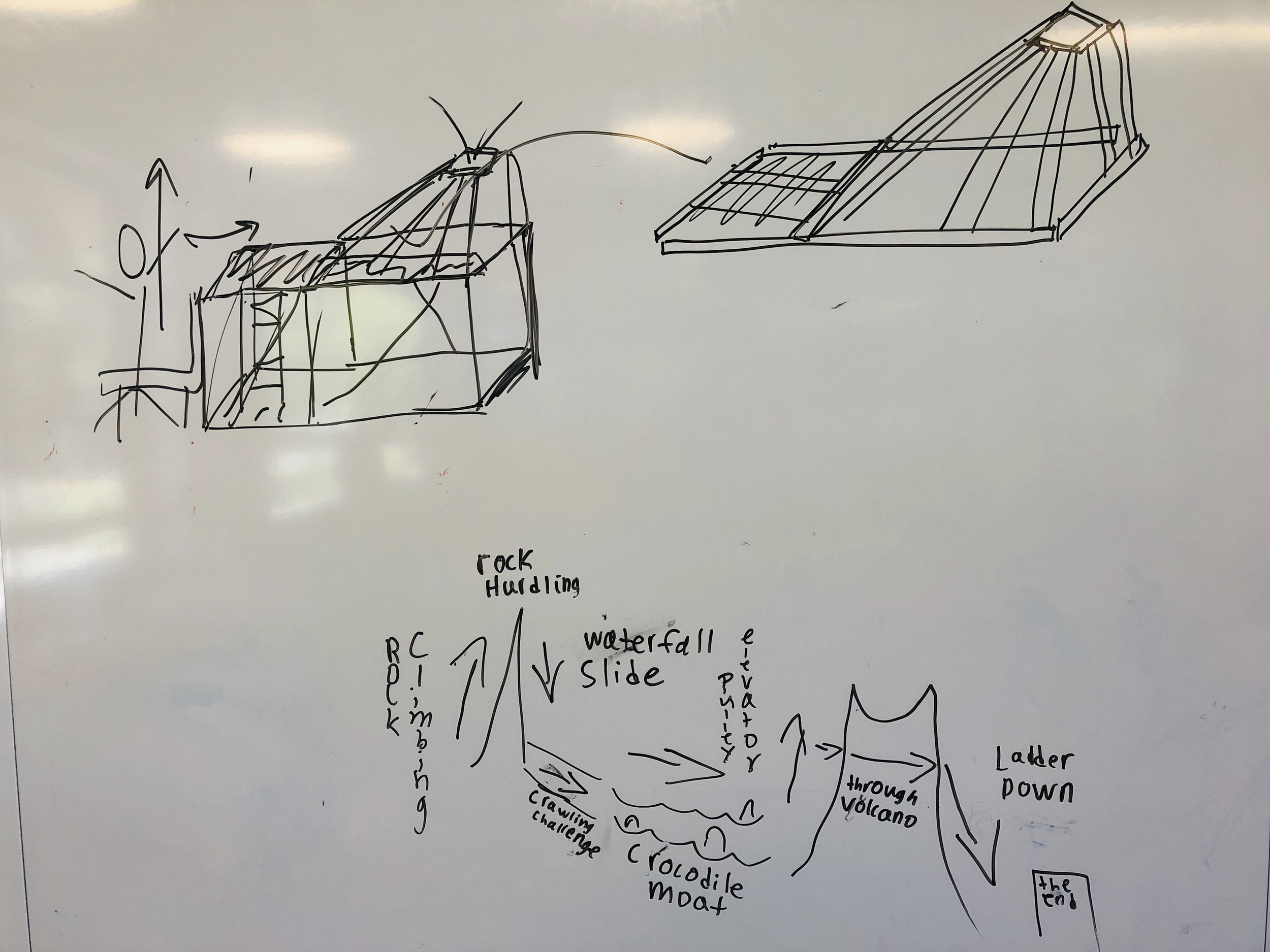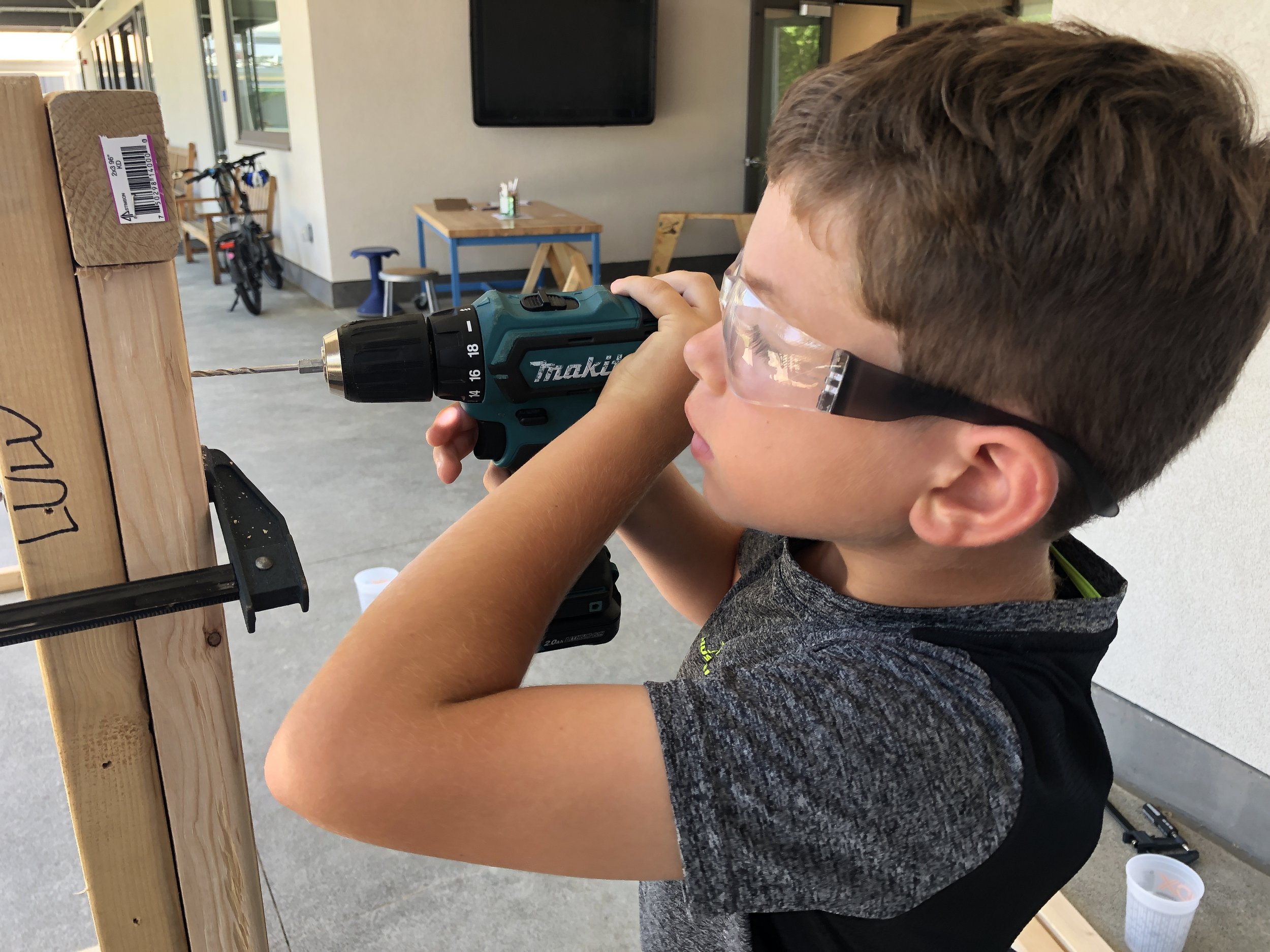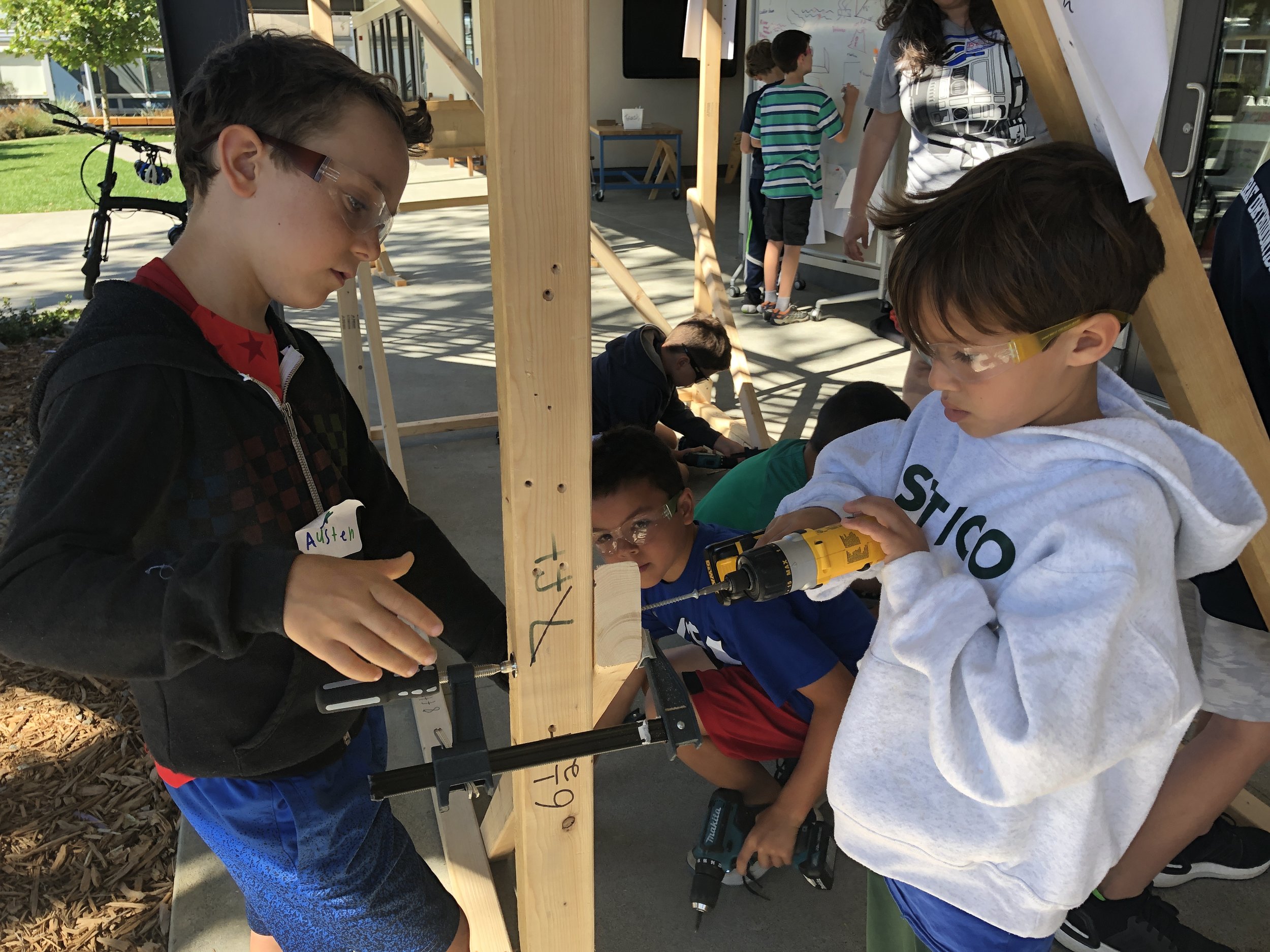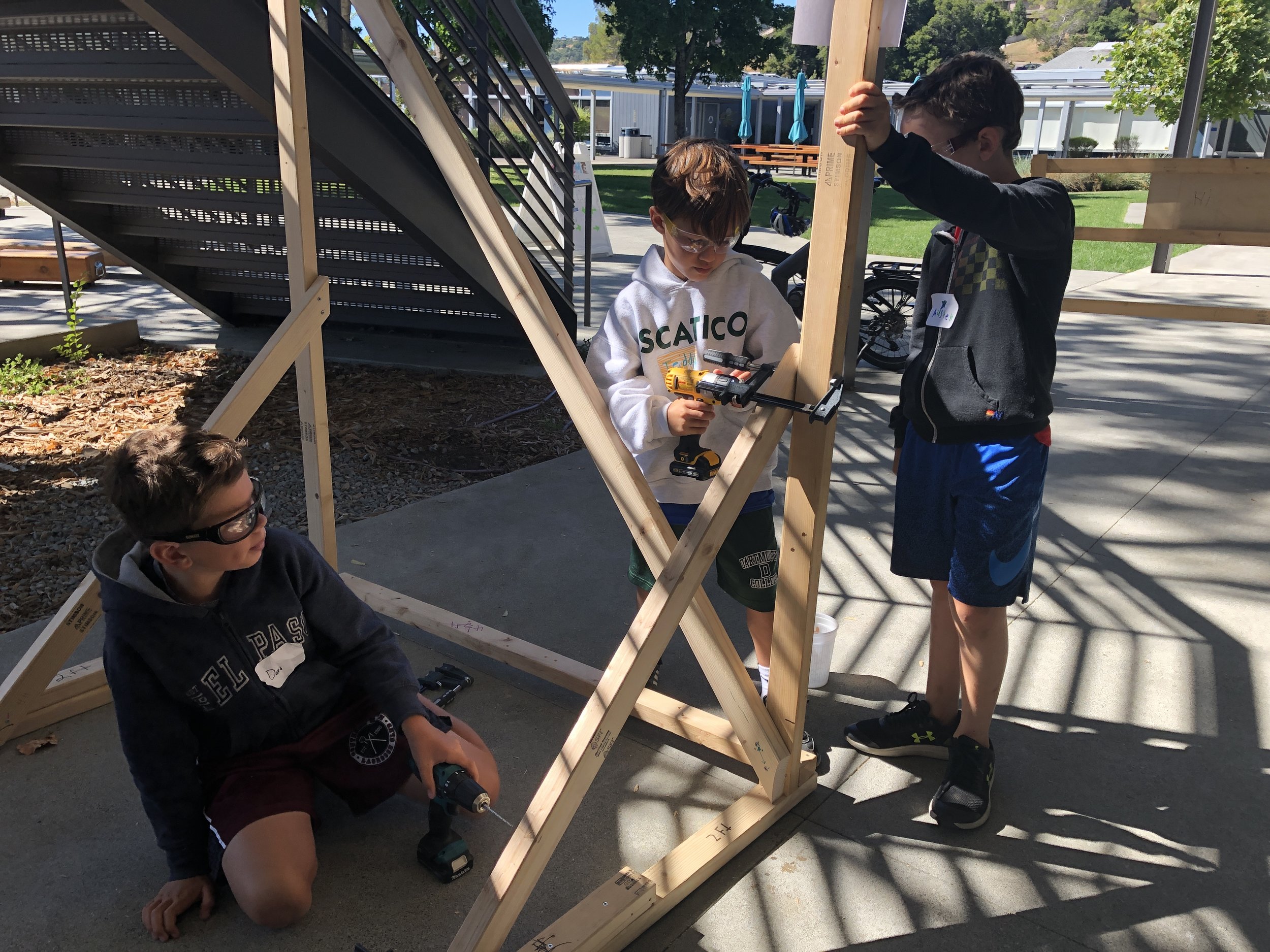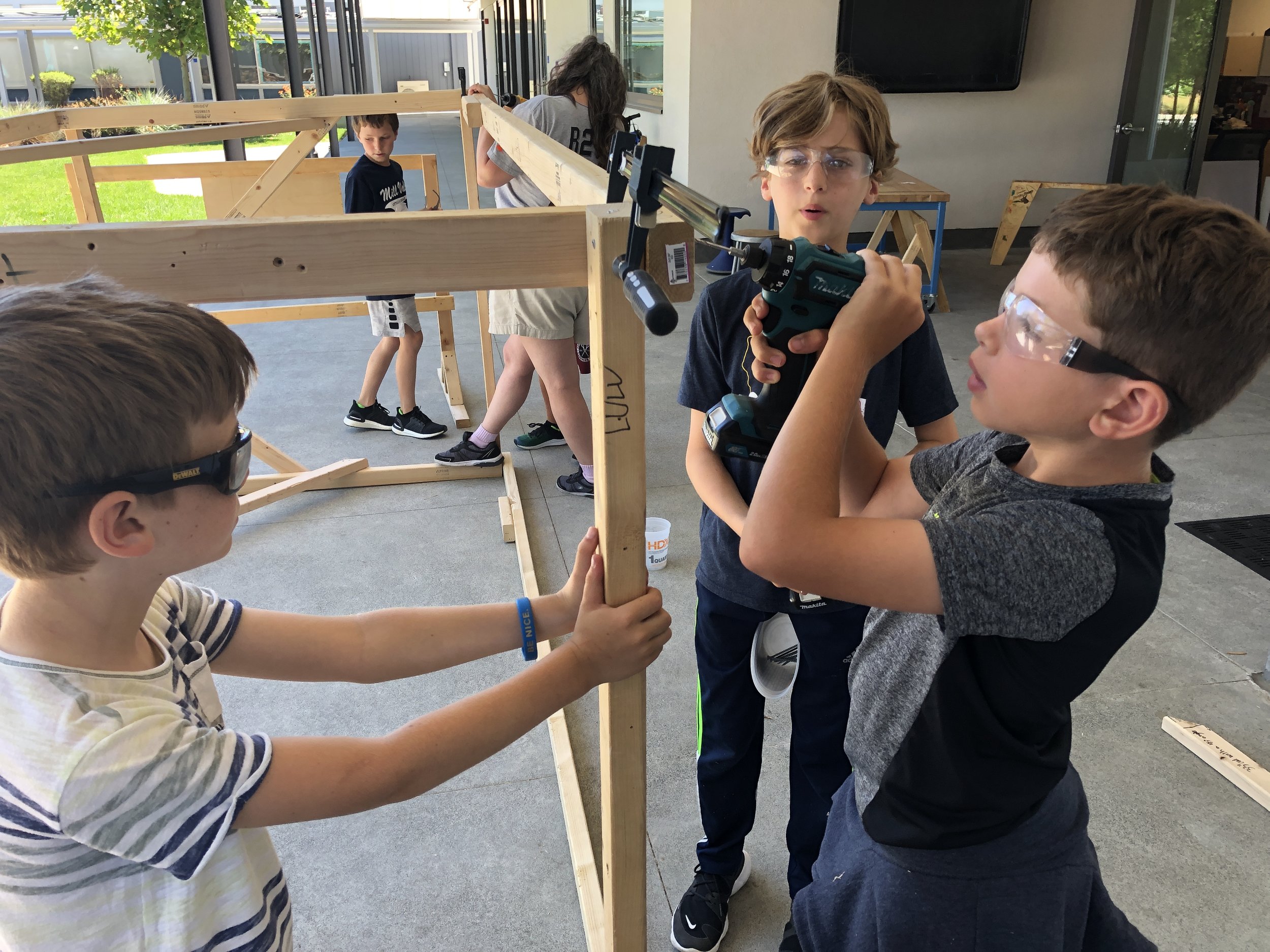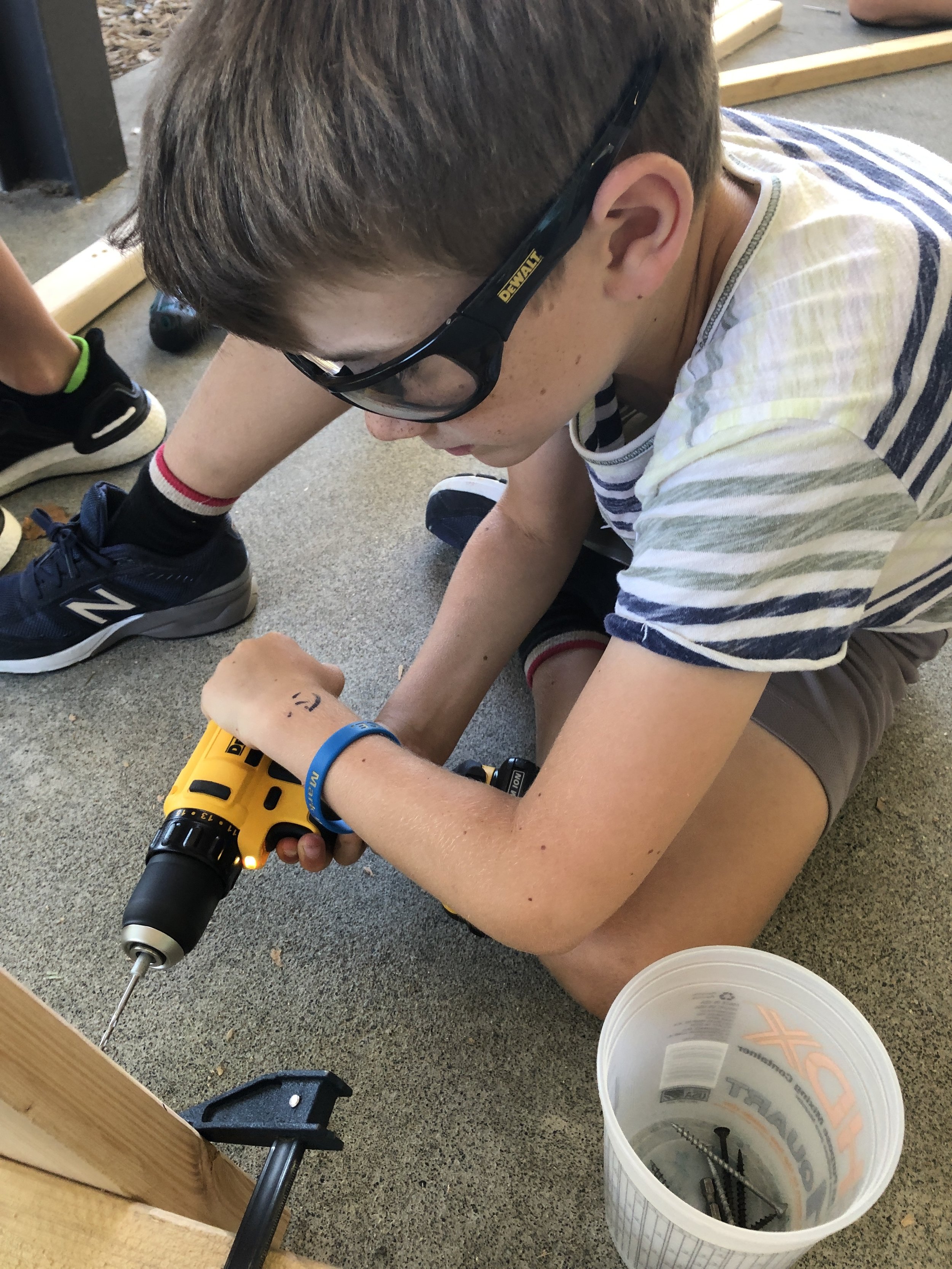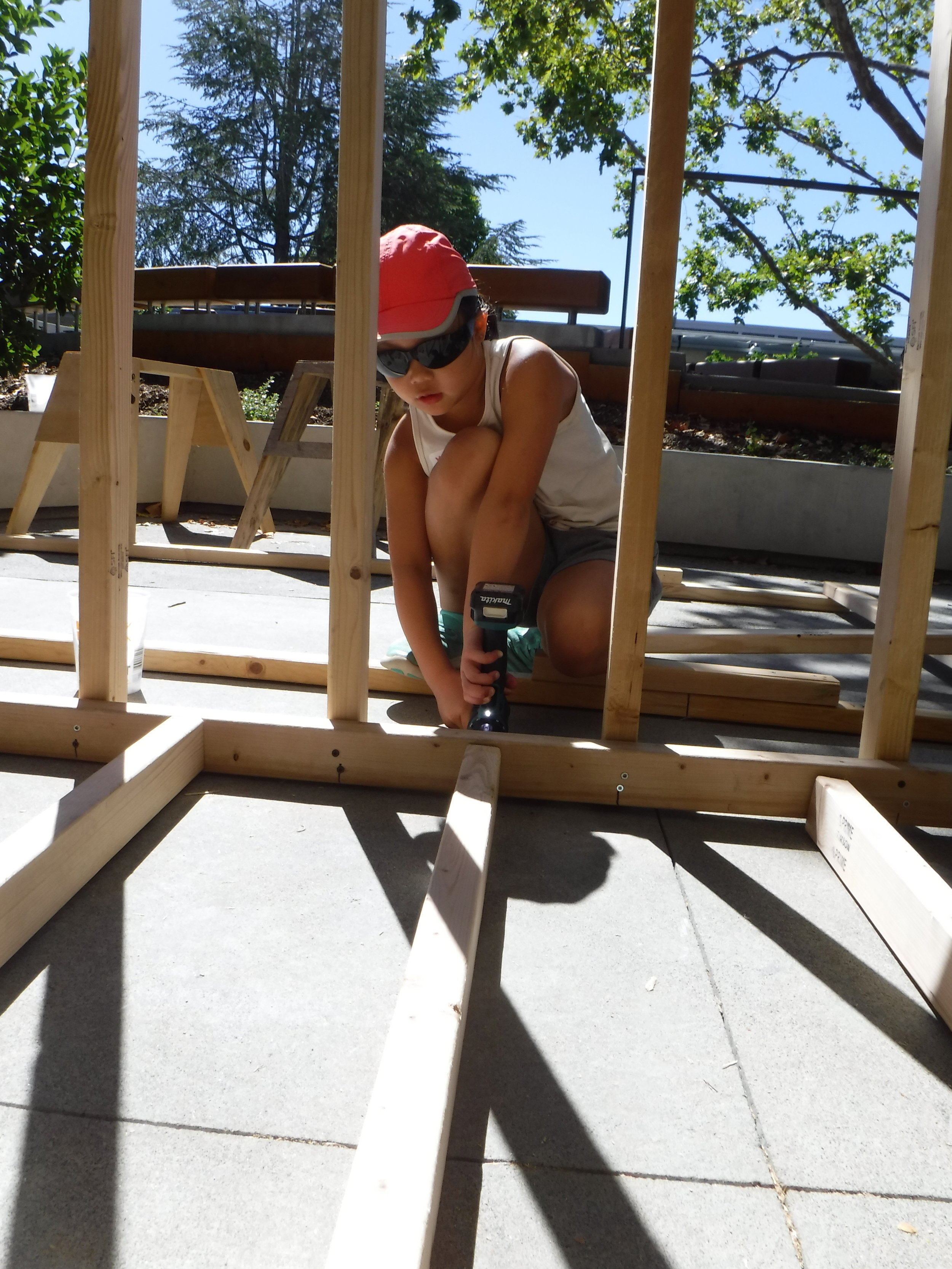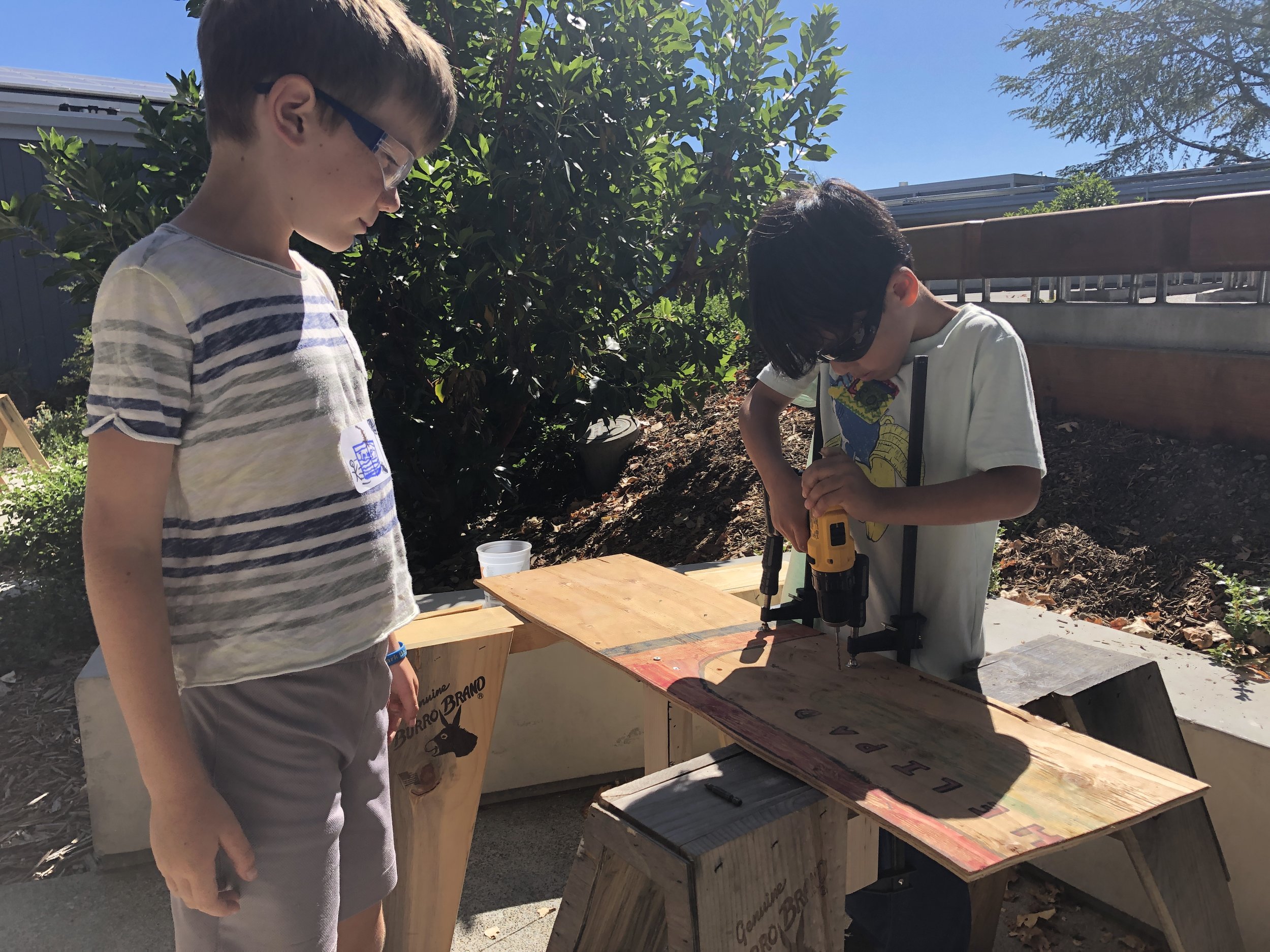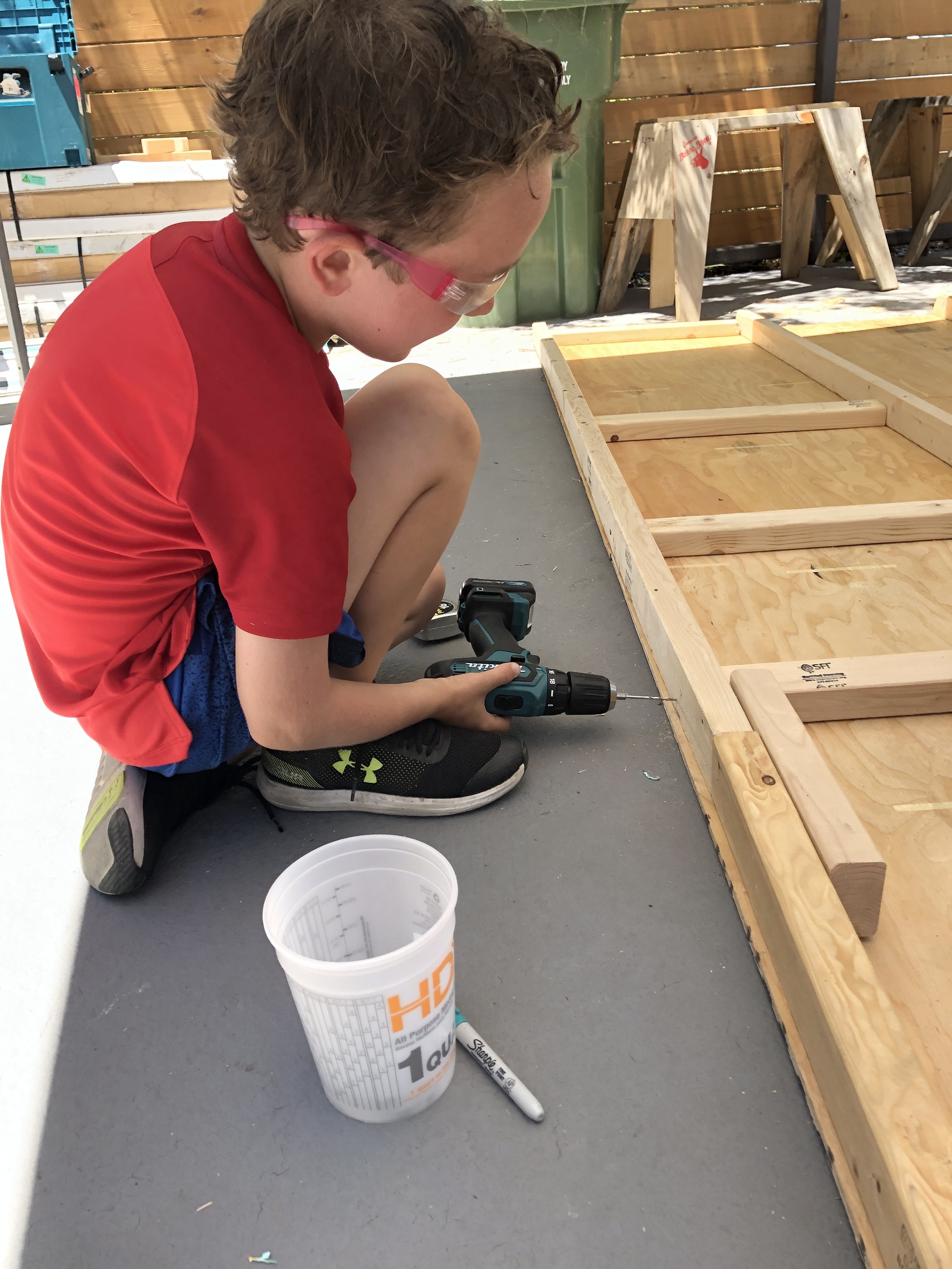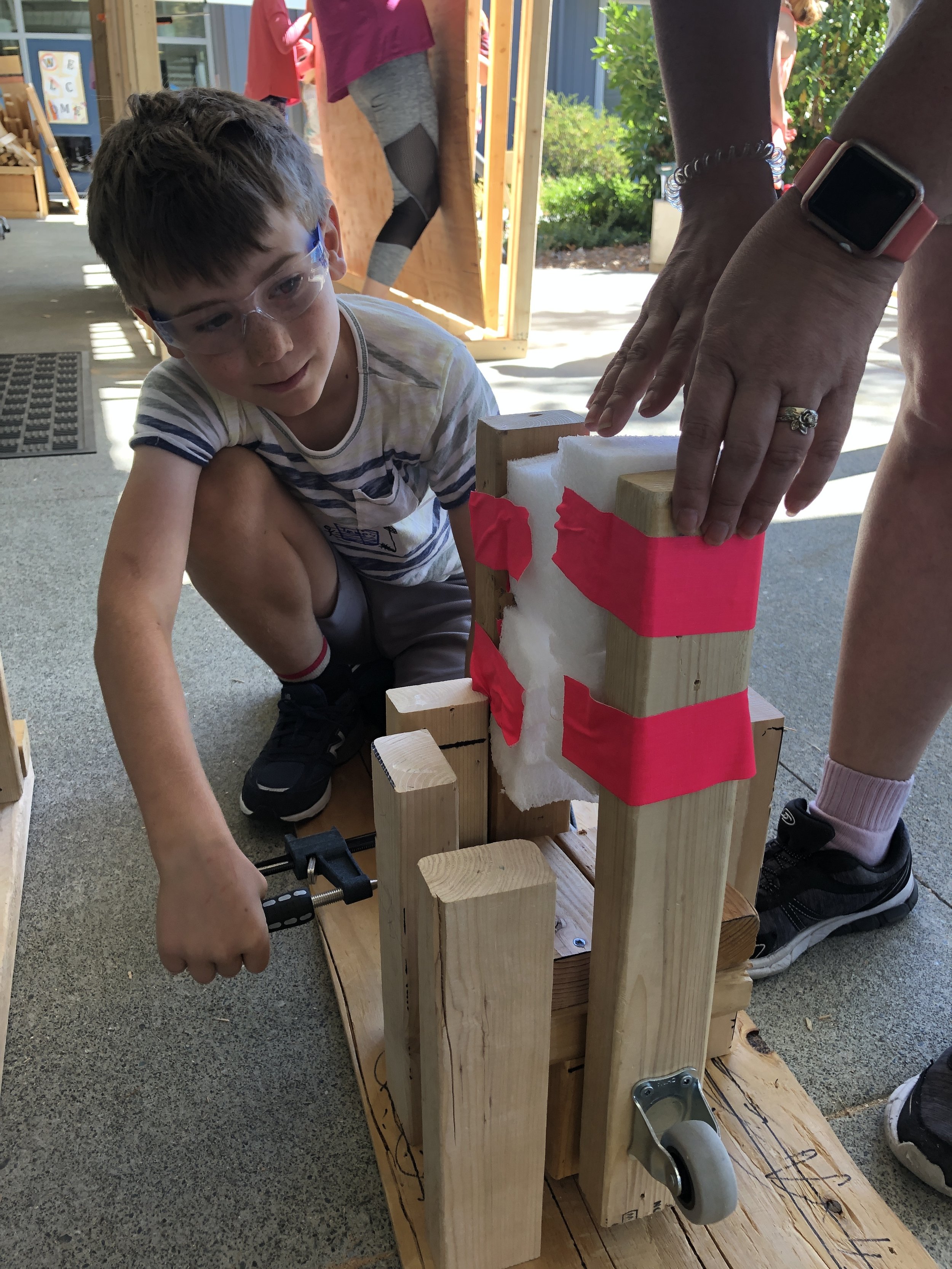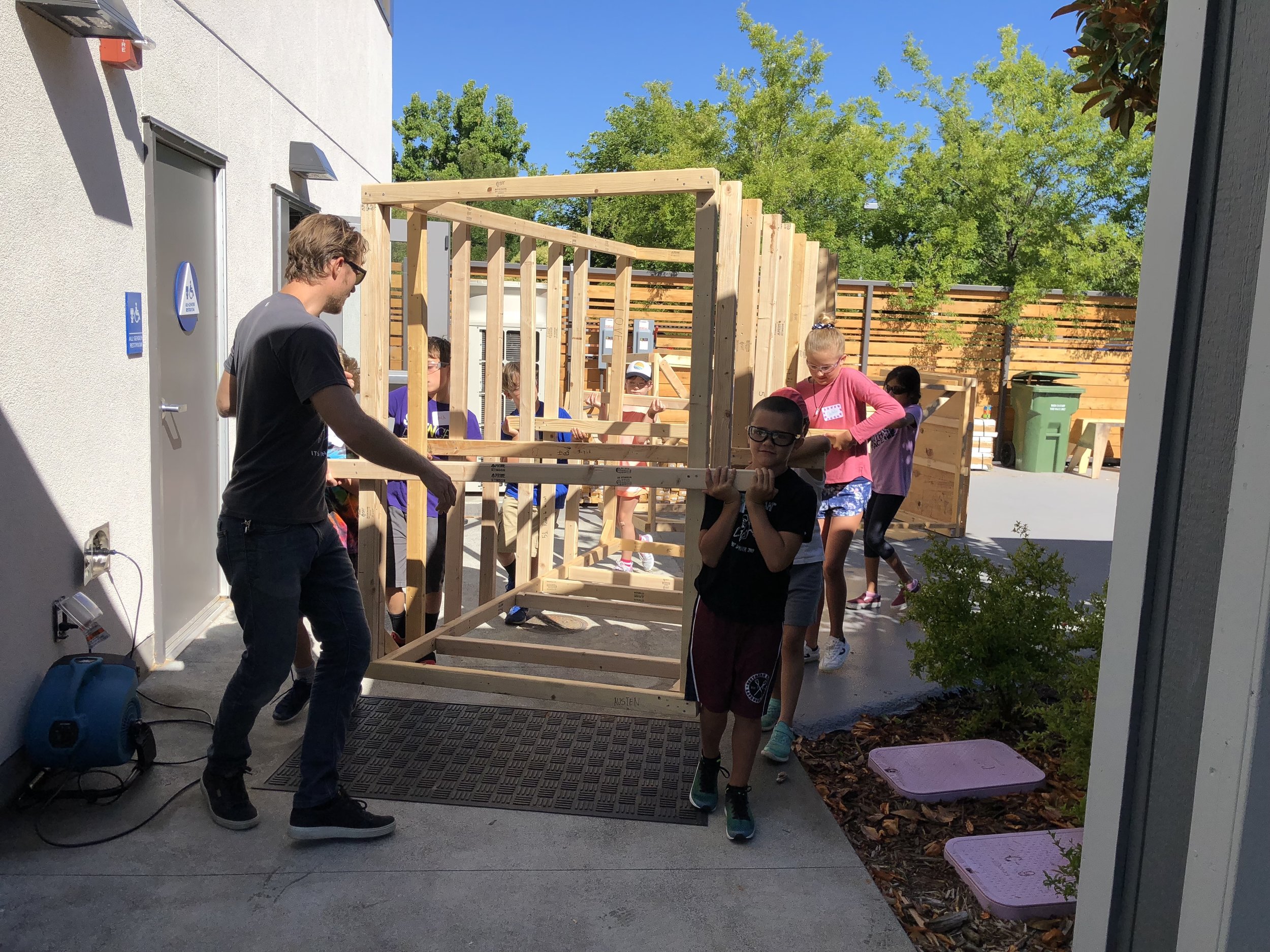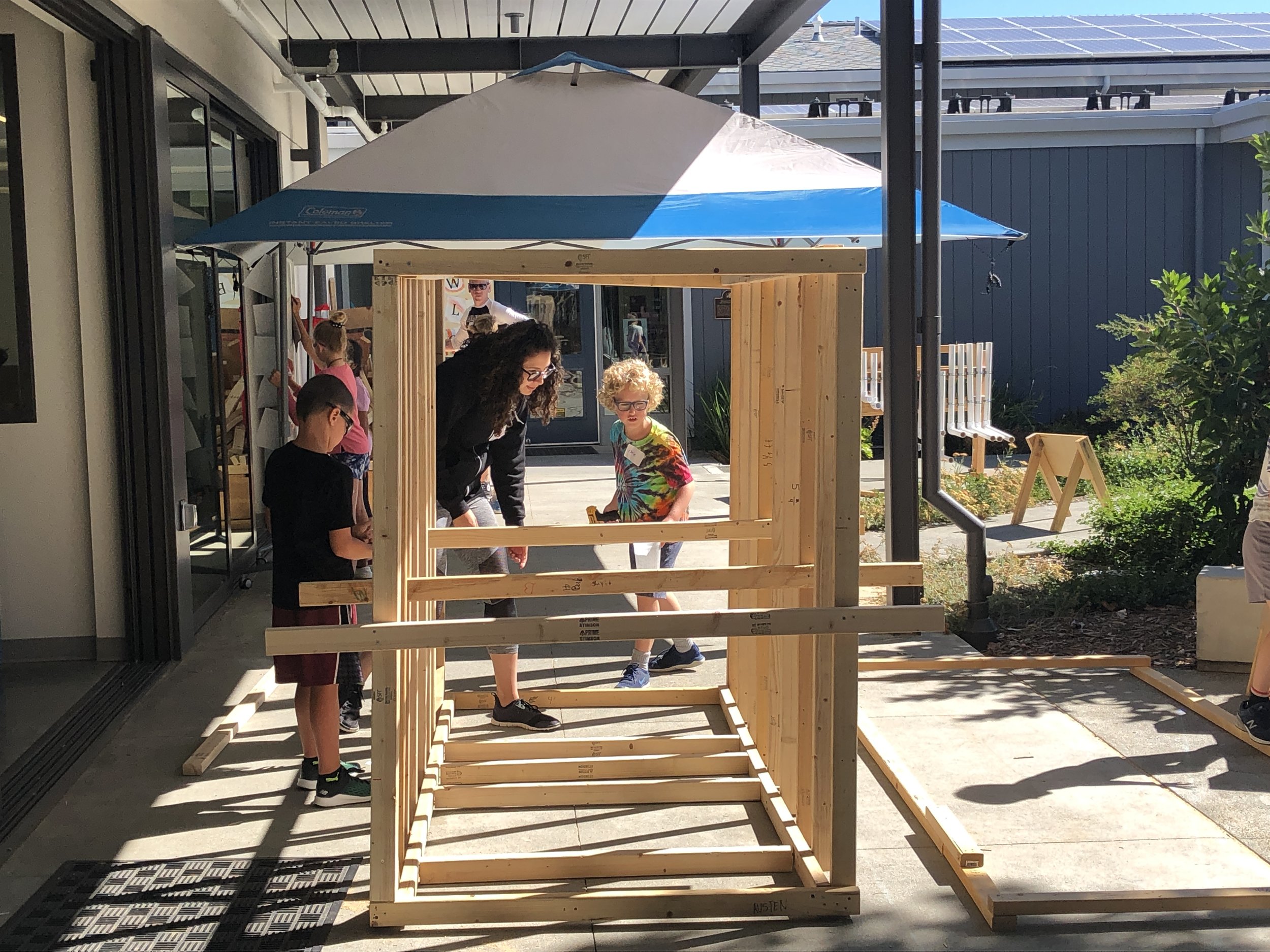Jungle Adventure Obstacle Course - Day 4 - Week 3 (Mark Day School)
Our energetic team of tinkerers put in their last full day of building today. They’ve really come together as a team. During our closing circle today they had so many appreciations to share (we call them love lasers), we had to cut our appreciation time short before everyone was finished sharing!
Perhaps the reason the group is collaborating so well together is because the project is truly daunting! For example, the slide waterfall they constructed today is 13 feet long, the platform it attaches to is huge and the rock wall on the other side takes at least four people to move! There is a distinct chance the project won’t be fully finished in time for our showcase tomorrow, but finishing is not a goal for the week like collaboration and trying harder than usual are. Come see how far we get on our Jungle Adventure tomorrow!
Filling the cave with obstacles
The cave takes shape
One, two, three, four drills in action to drive screws into the plywood sides of the cave.
Because one of our goals is to “Build something bigger than ourselves” and because we certainly do, we often have a need to move and turn very large structures such as the volcano. We had many tinkerers volunteer to help. Tatian led our group through a step-by-step plan and execution for rotating the volcano onto its side so that tinkerers could add cross beams for a landing platform.
The volcano frame needed to be shorter to accommodate our platform and to make room for building the cone (make mistakes and learn from them is one of our goals!) so David brought out the Japanese pull saw and gave a demo on how to use it.
Bracing the volcano with 45° angled boards.
A countersink bit is used when you want to ensure that the head of a screw is flush with the chair seat plywood.
In a camp for 7 to 11 year-olds, we don’t teach a whole lot of geometry (triangles for braces!) and trigonometry but we do have needs for both during the week. Angled cuts are a common occurrence on our chop saw. Our collaborator, Beth, calculated the length and angle of our 14-foot slide using trig formulas. And our tinkerer, Jesse, determined whether we needed trapezoids or parallelograms for our structural reinforcement braces and then explained the difference during circle time.
Click through the gallery below for more photos from today. Visit our Flickr page for many more photos from throughout the week.
